Satoshi Nakamoto
description: the pseudonymous person or group of people who created Bitcoin
95 results

The Mysterious Mr. Nakamoto: A Fifteen-Year Quest to Unmask the Secret Genius Behind Crypto
by
Benjamin Wallace
Published 18 Mar 2025
GO TO NOTE REFERENCE IN TEXT 127 people downloaded the Bitcoin software: Stefan Thomas, interview. GO TO NOTE REFERENCE IN TEXT “electronic currency and cryptography”: Dustin Trammell, email to Satoshi Nakamoto, incorporated in Satoshi Nakamoto, email to Dustin Trammell, January 13, 2009. GO TO NOTE REFERENCE IN TEXT “We definitely have similar interests!”: Satoshi Nakamoto, email to Dustin Trammell, January 13, 2009. GO TO NOTE REFERENCE IN TEXT “I love the idea”: Satoshi Nakamoto, “Re: [p2p-research] Bitcoin open source implementation of P2P,” p2p-research list, February 13, 2009. GO TO NOTE REFERENCE IN TEXT projected to hit around the year 2140: Stephen Katte, “The Last Bitcoin: What Will Happen Once All BTC Are Mined?
…
GO TO NOTE REFERENCE IN TEXT “I am not a lawyer”: Satoshi Nakamoto, email to Mike Hearn, April 27, 2009. GO TO NOTE REFERENCE IN TEXT “I’m better with code than with words”: Satoshi Nakamoto, “Bitcoin P2P e-cash paper,” CR, November 14, 2008. GO TO NOTE REFERENCE IN TEXT he acted as if he’d never heard of Wei Dai’s b-money: Satoshi Nakamoto, email to Adam Back, August 21, 2008. GO TO NOTE REFERENCE IN TEXT “expands on your ideas into a complete working system”: Satoshi Nakamoto, email to Wei Dai, August 22, 2008. GO TO NOTE REFERENCE IN TEXT smart drugs, genetic engineering, the corporation of the future: Nick Szabo, “Recommendations of Technical SF,” REC.ARTS.SF-LOVERS, UN, January 13, 1991.
…
I received an email from another “Satoshi,” vaguely soliciting my help as “a witness.” This one had earlier published a book, The Genesis Block: The Proof of Work, by “Satoshi Nakamoto.” A website, nakamotofamilyfoundation.org, posted what purported to be a twenty-one-page excerpt from a forthcoming literary memoir by Bitcoin’s founder titled Duality, but it contained odd ESL phrasings and misspellings and mischaracterized “Satoshi Nakamoto” as being, in Japan, as common as “John Smith.” Bloomberg, amazingly, reprinted “Key Passages From Satoshi Nakamoto Excerpt on Bitcoin Beginnings.” Then there was Bilal Khalid, a Pakistani Brit who worked for England’s National Health Service in London, was deeply interested in numerology, and had legally changed his name to James Caan for an elaborate set of reasons that included seeing the actor in The Godfather and realizing that “I am the Godfather of digital cash.”
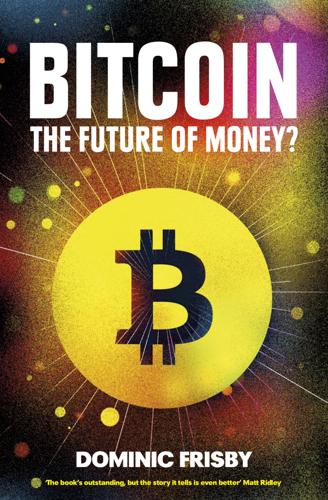
Bitcoin: The Future of Money?
by
Dominic Frisby
Published 1 Nov 2014
‘It didn’t occur to me that he was anonymous or that it was a pseudonym at the time,’ Adam Back remarked about Satoshi’s early emails to him. There are not many Satoshi Nakamotos in the world. There was a Satoshi Nakamoto in Japan. He died in 2010. He was a concrete expert. There was also a Satoshi Nakamoto in Honolulu. He died in 2008. (There’s also an NSA station there, which has added to the theory that Bitcoin is actually the NSA and that the name was actually a tribute to a brilliant, dead, secret Japanese-American code-breaker.) And there was Newsweek’s Dorian Satoshi Nakamoto, who thought Bitcoin was called ‘Bitcom’. A quick search on LinkedIn reveals some other living Satoshi Nakamotos (and a load of bogus ones) but none fit the profile even remotely.
…
, Unenumerated, May 28, 2011, accessed March 25, 2014, http://bit.ly/1tHFbde. 95 Gwern Branwen, ‘Happy birthday, Satoshi Nakamoto,’ Reddit/bitcoin, April 5, 2014, accessed May 20, 2014, http://bit.ly/1tru7ND. 96 Satoshi Nakamoto, ‘Re: Bitcoin P2P e-cash paper,’ Cryptography Mailing List, November 7, 2008, accessed February 19, 2013, http://bit.ly/1truasJ. 97 Ibid. 98 Satoshi Nakamoto, ‘Re: Bitcoin P2P e-cash paper,’ Cryptography Mailing List, November 14, 2008, accessed February 19, 2013, http://bit.ly/1tru7NC. 99 Satoshi Nakamoto, ‘[bitcoin-list] Bitcoin 0.3 released!,’ Sourceforge, July 6, 2010, accessed May 22, 2014, http://bit.ly/1tru7NE. 100 Satoshi Nakamoto, ‘Bitcoin P2P e-cash paper,’ Cryptography Mailing List, November 8, 2008, accessed May 20, 2014, http://bit.ly/1truasP. 101 Satoshi Nakamoto, ‘Bitcoin P2P e-cash paper,’ Cryptography Mailing List, November 8, 2008, accessed May 20, 2014, http://bit.ly/1truasP. 102 Satoshi Nakamoto, ‘Bitcoin open source implementation of P2P currency,’ P2P Foundation, February 11, 2009, accessed January 28, 2014, http://bit.ly/1tHFaWL. 103 Satoshi Nakamoto, ‘tcatm’s 4-way SSE2 for Linux 32/64-bit is in 0.3.10,’ BitcoinTalk, August 19, 2010, accessed March 5, 2014, http://bit.ly/1trBchb. 104 Satoshi Nakamoto, ‘tcatm’s 4-way SSE2 for Linux 32/64-bit is in 0.3.10,’ BitcoinTalk, August 15, 2010, accessed March 5, 2014, http://bit.ly/1trBfts. 105 Satoshi Nakamoto, ‘tcatm’s 4-way SSE2 for Linux 32/64-bit is in 0.3.10’, BitcoinTalk, August 15, 2010, accessed March 5, 2014, http://bit.ly/1trBchd. 106 Satoshi Nakamoto, ‘tcatm’s 4-way SSE2 for Linux 32/64-bit is in 0.3.10,’ BitcoinTalk, August 15, 2010, accessed March 5, 2014, http://bit.ly/1trBftu. 107 MoonShadow, ‘re.
…
Once you’ve understood that, see the follow up here – http://bit.ly/1tru7NK. 109 ‘Bitcoin and me.’ 110 AnonymousSpeech.com, accessed January 22, 2014. http://bit.ly/1trBchh. 111 Satoshi Nakamoto, ‘Re: IPv6, headless client, and more,’BitcoinTalk, June 27, 2010, accessed March 10, 2014, http://bit.ly/1pLBdbX. 112 Satoshi Nakamoto, ‘Re. Potential Disaster Scenario,’ August 15, 2010, accessed March 25, 2014, http://bit.ly/1trBfJK. 113 Satoshi Nakamoto, ‘Re: wiki registration email,’ July 29, 2010, accessed March 25, 2014, http://bit.ly/1trBfJN. 114 Satoshi Nakamoto, Bitcointalk, accessed February 26, 2014, http://bit.ly/1trBfJQ and http://bit.ly/1trBchl. 115 Satoshi Nakamoto, ‘Re:URI-scehem for bitcoin,’ BitcoinTalk, February 24, 2010, accessed March 10, 2010, http://bit.ly/1trBfJS.
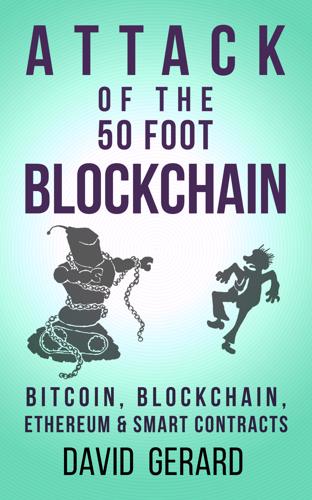
Attack of the 50 Foot Blockchain: Bitcoin, Blockchain, Ethereum & Smart Contracts
by
David Gerard
Published 23 Jul 2017
However, he said that he had been speaking of his work on classified systems for military contractors, and that he hadn’t even heard of Bitcoin (which he first called “Bitcom” with an M) until his son had been contacted by a reporter two months earlier. In the first sighting since 2011, the “Satoshi Nakamoto” account that had posted the 2009 announcement of Bitcoin 0.1 on the P2P Foundation forums commented on that post: “I am not Dorian Nakamoto.” (Some noted that the comment could have been posted by a forum administrator and that it was not cryptographically confirmed to be Satoshi Nakamoto.)147 The Bitcoin world was both utterly unconvinced by Newsweek’s report, and outraged that they would violate an alleged Satoshi Nakamoto’s privacy in that manner.148 149 Newsweek defended its article,150 but eventually appended a statement from Dorian Nakamoto to the web version of the original piece in which he denied the whole story and noted the damage it had done to his livelihood.
…
Andresen went to London to meet with Wright. Wright cryptographically signed a message as Satoshi Nakamoto on his own computer and verified it. Andresen wanted to check it on his computer, saying he had to be able to say that he’d checked it independently. Wright suddenly balked, not trusting Andresen’s hardware. A new laptop was obtained and unwrapped and Wright installed the Bitcoin Electrum wallet software.175 Wright opened the claimed Satoshi Nakamoto Bitcoin wallet on the new laptop and seemed to verify that he held a Satoshi Nakamoto private key.176 Wright performed a similar demonstration for Jon Matonis from the Bitcoin Foundation.177 None of this evidence was released for public review; Andresen said “I was not allowed to keep the message or laptop (fear it would leak before Official Announcement).”178 The PR team secured the BBC, The Economist and GQ; the journalists signed non-disclosure agreements and embargoes, and in late April Wright demonstrated use of the Satoshi key to each.
…
Forbes (staff blog), 2 May 2016. (archive) [141] The Satoshi Nakamoto Institute site collects every public post by him, and emails people have released. [142] Gwern Branwen. “Happy birthday, Satoshi Nakamoto”. Reddit /r/bitcoin, 5 April 2014. [143] e.g., Dominic Frisby. “The Search for Satoshi”. CoinDesk, 8 November 2014. [144] Gwern Branwen. “Blackmail fail”. [145] Leah McGrath Goodman. “The face behind Bitcoin”. Newsweek, 6 March 2014. [146] Ryan Nakashima. “Man said to create bitcoin denies it”. AP The Big Story, 7 March 2014. (archive) (video) [147] Satoshi Nakamoto. Comment on “Bitcoin open source implementation of P2P currency”.

Digital Gold: Bitcoin and the Inside Story of the Misfits and Millionaires Trying to Reinvent Money
by
Nathaniel Popper
Published 18 May 2015
CHAPTER 3 29Before reaching out to Satoshi, Martti had written about Bitcoin on anti-state.org: Martti’s post, written under the screen name Trickster, is available at https://board.freedomainradio.com/topic/17233-p2p-currency-could-make-the-government-extinct/. 30“The root problem with conventional currency”: Satoshi Nakamoto, “Bitcoin Open Source Implementation of P2P Currency,” P2P Foundation forum, February 11, 2009, http://p2pfoundation.ning.com/forum/topics/bitcoin-open-source. 33It also meant that Satoshi’s computers were still: Sergio Demian Lerner, “The Well Deserved Fortune of Satoshi Nakamoto, Bitcoin Creator, Visionary and Genius,” Bitslog, April 17, 2013, https://bitslog.wordpress .com/2013/04/17/the-well-deserved-fortune-of-satoshi-nakamoto/. 35“Be safe from the unstability caused by fractional reserve”: An archived version of the page designed by Martti is available at http://web.archive .org/web/20090511173000/http://bitcoin.sourceforge.net/. 35A few dozen people downloaded the Bitcoin program: Data on software downloads available at http://sourceforge.net/projects/bitcoin/files/stats/timeline. 37Starting in August, the log of changes to the software: The history of changes to the software is available at https://gitorious.org/bitcoin/bitcoind/activities. 37When the next version of Bitcoin, 0.2: Satoshi Nakamoto to DEV-LIST, December 17, 2009. 37the majority of coins were still: Lerner. 37throughout 2009 no one else was sending or receiving: Data on the number of transactions per block available at https://blockchain.info/charts/n-transactions-per-block. 38In the very first recorded transaction of Bitcoin for United States dollars: Information on the transaction is available at https://blockchain .info/tx/7dff938918f07619abd38e4510890396b1cef4fbeca154fb7aaf ba8843295ea2. 38NewLibertyStandard came up with his own method: The shuttered exchange is still online at http://newlibertystandard.wikifoundry.com/page/Exchange+Rate. 39Swap Variety Shop on his exchange website: The shuttered shop is still online at http://newlibertystandard.wikifoundry.com/page/Specialty+Shop.
…
More impressive than that, though, was the security expert’s conclusion, from a careful analysis of the blockchain, that Satoshi had never spent a single one of the Bitcoins he had created. His work in creating the system really did seem to be a selfless act. In addition to what the day had revealed about Satoshi Nakamoto, the incident suggested that the identity of Satoshi Nakamoto really didn’t matter much. For a few hours on the morning of March 6, the world had believed that the creator of Bitcoin was an aging libertarian and model-train enthusiast living with his mother. The price of Bitcoin didn’t move much in either direction. The Bitcoin protocol was now maintained by Gavin Andresen and a team of developers and the code spoke for itself.
…
CHAPTER 2 16As sociologist Nigel Dodd put it: Nigel Dodd, The Social Life of Money (Princeton, NJ: Princeton University Press, 2014). 17“We could envisage proposals in the near future”: Alan Greenspan, Conference on Electric Money and Banking, United States Treasury, September 19, 1996, http://www.federalreserve.gov/boarddocs/speeches/19960919.htm. 17a British researcher named Adam Back released his plan: Adam Back to CYPH, March 28, 1997. 18a concept called bit gold, was invented by Nick Szabo: Nick Szabo, “Bit Gold,” Unenumerated, December 2005, http://unenumerated.blogspot .co.uk/2005/12/bit-gold.html. 19Another, known as b-money, came from an American named Wei Dai: Wei Dai to CYPH, 1998. 19Hal created his own variant, with a decidedly less sexy name: Hal Finney to CYPH, August 15, 2004. 20The nine-page PDF attached to the e-mail: the current version is available at https://bitcoin.org/bitcoin.pdf. 22modeled after the contest that Adam Back: While this process was modeled on Back’s program, it also relied on the innovations of several other cryptographers and mathematicians, including Ralph Merkle, Stuart Haber, and W. Scott Stornetta. 25usually belonging to Satoshi: Satoshi’s mining activities were traced by the Argentinian researcher Sergio Demian Lerner. Sergio Demian Lerner, “The Well Deserved Fortune of Satoshi Nakamoto, Bitcoin Creator, Visionary and Genius,” Bitslog, April 17, 2013, https://bitslog.wordpress .com/2013/04/17/the-well-deserved-fortune-of-satoshi-nakamoto/. 25the first transaction took place when Satoshi sent Hal ten coins: Satoshi’s address for this transaction was 12cbQLTFMXRnSzktF kuoG3eHoMeFtpTu3S; Hal’s was 1Q2TWHE3GMdB6BZKafqwxX tWAWgFt5Jvm3. 26Satoshi was using his own computers to help power the network: Lerner. 26When a programmer in Texas wrote to Satoshi late one night: The programmer, Dustin Trammel, posted the e-mails on his blog at http://blog.dustintrammell.com/2013/11/26/i-am-not-satoshi/.

The Age of Cryptocurrency: How Bitcoin and Digital Money Are Challenging the Global Economic Order
by
Paul Vigna
and
Michael J. Casey
Published 27 Jan 2015
That’s the estimate that cryptographer Sergio Lerner: Sergio Lerner, “The Well Deserved Fortune of Satoshi Nakamoto, Bitcoin Creator, Visionary and Genius,” Words on Bitcoin Design, Privacy, Security and Crypto blog, April 17, 2013, http://bitslog.wordpress.com/2013/04/17/the-well-deserved-fortune-of-satoshi-nakamoto/. SecondMarket’s CEO, Barry Silbert, describes: Comments made at media roundtable sponsored by Circle Internet Financial, New York, December 10, 2013. Nick Szabo, whose writings, the forensics linguists tell us: Paul Vigna, “Bitcoin Creator ‘Satoshi Nakamoto’ Unmasked—Again?,” Wall Street Journal, MoneyBeat blog, April 16, 2014, http://blogs.wsj.com/moneybeat/2014/04/16/bitcoin-creator-satoshi-nakamoto-unmasked-again/.
…
Bitcoin takes on the look of a religious movement: the meetups that are reminiscent of church socials, the cultlike crowds that sing bitcoin’s praises on social forums such as Reddit and Twitter, the movement’s evangelists—people such as Barry Silbert, Nicolas Cary, Andreas Antonopoulos, Charlie Shrem, and Roger Ver (whose nickname is Bitcoin Jesus). At the top of it all, ensconced firmly in a creation myth that inspires and nurtures the faithful, is Satoshi Nakamoto, the godhead of bitcoin. But cryptocurrencies could flame out entirely—like the Betamax video format (for those of you old enough to remember it). Or they could have only marginal real-world application, much as the once heavily hyped Segway has had. No less a dedicated bitcoiner than Gavin Andresen, the software engineer whom Satoshi Nakamoto effectively appointed to become the lead developer of bitcoin’s core software, articulates it this way: “Every time I give a talk, I emphasize that bitcoin really is still an experiment; every time I hear about somebody investing their life savings in it, I cringe.”
…
If we apply the chartalists’ view that money is a social phenomenon, then this ongoing community expansion represents nothing less than a currency’s endeavoring to become money. Two GENESIS What is needed is an electronic payment system based on cryptographic proof instead of trust. —Satoshi Nakamoto October 31, 2008, 2:10 P.M., New York time. The several hundred members of an obscure mailing list comprising cryptography experts and enthusiasts receive an e-mail from somebody calling himself Satoshi Nakamoto.* “I’ve been working on a new electronic cash system that’s fully peer-to-peer, with no trusted third party,” he writes flatly. His brief text directs them to a nine-page white paper posted at a new Web site that he had registered two months earlier, which describes a currency system he calls bitcoin.
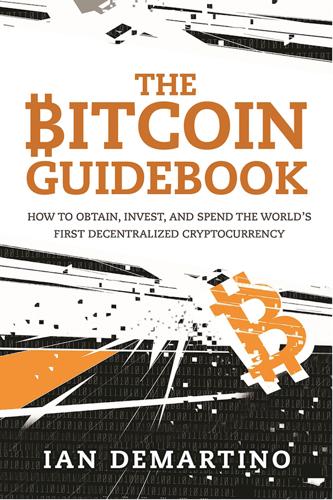
The Bitcoin Guidebook: How to Obtain, Invest, and Spend the World's First Decentralized Cryptocurrency
by
Ian Demartino
Published 2 Feb 2016
There is, of course, the long-held theory that Satoshi Nakamoto is/was Nick Szabo, who wrote publicly about concepts very similar to Bitcoin. There is also David Chaum, who certainly had the necessary experience and perhaps wanted to show the world that electronic cash was viable. Adam Back invented hashcash and commented on the B-money proposal when it was first proposed in the Cypherpunk mailing list, so he can’t be ruled out either. A man named Dorian Prentice Satoshi Nakamoto, who was living in a small house in California, was once “outed” as the real Satoshi Nakamoto by Newsweek in a highly controversial cover story.13 When the article came out, Satoshi Nakamoto’s email came back to life, only to post on the Bitcoin developer mailing list that he was “not Dorian Nakamoto.”
…
Roger Ver: Angel investor and Bitcoin evangelist; CEO of Memorydealers.com, one of the first sites to accept Bitcoin, and founder of the company Blockchain. Cody Wilson: Dark Wallet co-creator and 3D-printed gun designer. Craig Wright: A recent addition to the search for Satoshi Nakamoto. Wired magazine recently reported he was “probably” the creator of Bitcoin (or wanted the world to think he was). In May 2016, he attempted to prove that he had created Bitcoin by signing a message using an account associated with Satoshi Nakamoto. Many were convinced at that point, including Gavin Andresen. However, much of the community remained skeptical. After promising to provide even more evidence, Wright backed out.
…
No mint or other trusted parties. Participants can be anonymous. New coins are made from Hashcash style proof-of-work. The proof-of-work for new coin generation also powers the network to prevent double-spending. —Satoshi Nakamoto’s announcement of Bitcoin, The Cryptography and Cryptography Policy Mailing List, November 1, 2008 With this message, an anonymous person or group posting under the name Satoshi Nakamoto started the revolution known to the public as Bitcoin. When the Internet first came into the public’s consciousness, people instantly began wondering how Internet commerce would be handled. A lot of people could see the potential of selling goods through the Internet, since—as I noted earlier—systems that enabled home shopping through computer terminals had been around since the 1970s.
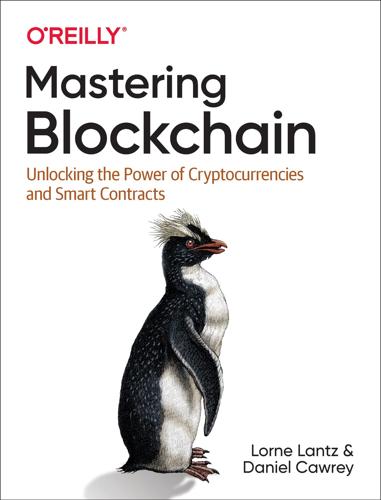
Mastering Blockchain: Unlocking the Power of Cryptocurrencies and Smart Contracts
by
Lorne Lantz
and
Daniel Cawrey
Published 8 Dec 2020
Bitcoin block #170, which records a transaction of 10 BTC sent from Satoshi Nakamoto to developer and early blockchain pioneer Hal Finney Figure 1-8 illustrates why it would be hard to change a past transaction. Figure 1-8. Why it’s difficult to roll back bitcoin transactions Satoshi Nakamoto’s Disappearance Many are naturally curious about the true identity of Satoshi Nakamoto. After the Bitcoin whitepaper’s publication, Satoshi continued to be a figure in the community until 2012, helping bring Bitcoin into existence as a functional system. Journalists have long tried to discover the identity of Satoshi Nakamoto. However, it is possible that it’s not a single individual, but an amalgamation of a number of people working together who saw the financial crisis of 2008 as an opportunity to propose blockchain-based technology as a solution to the problems that caused the meltdown.
…
Although manipulation, tax evasion, and money laundering are still prohibited, the Bahamas is taking a forward-looking approach to cryptocurrency in order to foster innovation. Who Is Satoshi Nakamoto? The original Bitcoin whitepaper was released pseudonymously, and a number of people have made claims about who its author, Satoshi Nakamoto, might really be. However, there is little evidence to suggest any of these claims are true. Two of the most popular guesses are: Dorian Nakamoto In 2014, Newsweek published an investigation piece identifying this person as the creator of bitcoin. The article pointed to a man living in Southern California with the name “Dorian Prentice Satoshi Nakamoto.” Although Dorian Nakamoto does have a computer science background, he himself denied his involvement in bitcoin.
…
Because although many of the concepts and technologies underlying Bitcoin already existed in 2008, no one had ever put together all the pieces of earlier e-money concepts to create a system that enabled digital trust and transparency. The Whitepaper On August 18, 2008, >the domain bitcoin.org was registered. Then, written by someone or a group using the pseudonym Satoshi Nakamoto, a whitepaper was published on October 31, 2008, and shared on numerous software developer mailing lists. Titled “Bitcoin: A Peer-to-Peer Electronic Cash System,” the paper provided a detailed proposal for creating a value system that existed only on the internet. The aim was to create a digital currency that could operate without any connection to a bank or central government, and to build a more transparent financial system that could prevent the catastrophic events of the financial crisis from ever happening again.
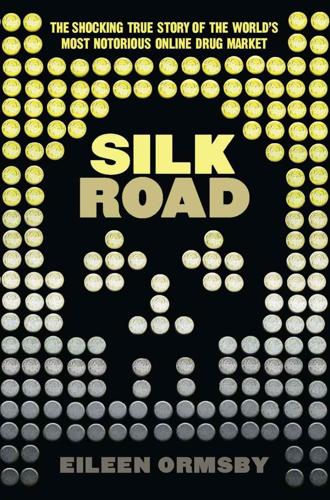
Silk Road
by
Eileen Ormsby
Published 1 Nov 2014
The cryptocurrency’s life started on 1 November 2008, when a message appeared on a cryptography mailing list from someone calling himself ‘Satoshi Nakamoto’. ‘I’ve been working on a new electronic cash system that’s fully peer-to-peer, with no trusted third party,’ said his first posting. He linked to a white paper and invited discussion from other cryptographers. Nakamoto took on advice and suggestions until bitcoin was properly unleashed in February 2009, when a modest post appeared on an obscure internet discussion forum, P2P Foundation, by Satoshi Nakamoto (male, 38, Japan): ‘I’ve developed a new open source P2P e-cash system called bitcoin . . .
…
Mythology grew of the man who had apparently not made a single mistake – not in the code behind his invention, nor in covering his tracks, despite there being few people in the world who could possibly be him. The mystery spawned an entire industry, with T-shirts emblazoned with ‘Who is Satoshi Nakamoto?’ and ‘I am Satoshi Nakamoto’ selling in worldwide stores dedicated to technology buffs. If Nakamoto were a fictional character he would be the James Bond or Jason Bourne of cyberspace – a genius, an inventor, an outlaw with wealth beyond our imagination. He existed nowhere but in his online musings. He used his rare mathematical genius to create a virtual currency the value of which went from zero to a billion dollars in a couple of years and managed for years to evade every effort to track him down and unmask him.
…
That the coins had remained untouched sparked another round of conspiracy theories: that he had died, that the coins were held on a corrupted hard drive and could therefore not be recovered, or that he couldn’t cash out without destabilising the currency or revealing his identity. Satoshi Nakamoto was named Business Insider’s most important person of 2013 and was a contender for the title in several other publications, including The Guardian. Journalist Andrew Smith wrote a lengthy piece for the UK’s Sunday Times in late February 2014 about his personal hunt for Satoshi Nakamoto. Smith interviewed the suspects (or at least, those who agreed to speak to him) and found evidence lacking for each. All those who had been ‘unmasked’ by various publications over the years continued to deny they were the pseudonymous creator.
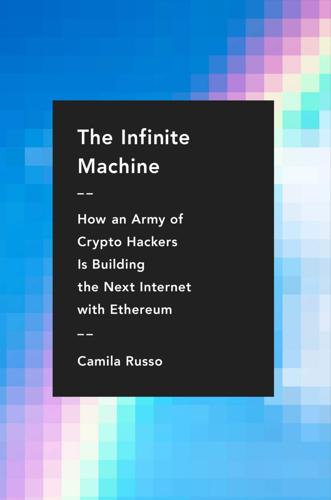
The Infinite Machine: How an Army of Crypto-Hackers Is Building the Next Internet With Ethereum
by
Camila Russo
Published 13 Jul 2020
Sometimes Charles seemed to hint that he was Satoshi Nakamoto, the creator of Bitcoin. Satoshi Nakamoto’s identity has been the source of endless speculation, but very few have claimed his identity, knowing they would be met with demands for proof and dogged scrutiny from the crypto community. For someone in crypto, Charles might as well had been saying he was the messiah. It was early March 2014, the day after they had moved in the Zug house, when Newsweek magazine came out with the headline “The Face Behind Bitcoin” splashed across its cover. The reporter on the story claimed Bitcoin’s creator, Satoshi Nakamoto, was a Japanese-American engineer called Dorian S.
…
Timothy May wrote in the manifesto: Timothy May, “The Crypto Anarchist Manifesto,” November 22, 1992, https://activism.net/cypherpunk/crypto-anarchy.html. 3. “ongoing chain of hash-based proof-of-work”: Satoshi Nakamoto, “Bitcoin P2P E-cash Paper,” Cryptography Mailing List, October 31, 2008, https://satoshi.nakamotoinstitute.org/emails/cryptography/1/#selection-75.18-83.27.18. 4. Satoshi Nakamoto wrote in the paper: Satoshi Nakamoto, “Bitcoin: A Peer-to-Peer Electronic Cash System,” 2008, https://bitcoin.org/bitcoin.pdf. 5. “Bitcoin offers a way to fix this”: Vitalik Buterin, reply to “Bitcoin Weekly Looking for Writers,” BitcoinTalk, March 25, 2011, https://bitcointalk.org/index.php?
…
Cypherpunks had continued incrementally improving past work until the major breakthrough came in October 2008, when an anonymous person or persons going by the name Satoshi Nakamoto emailed the group. “I’ve been working on a new electronic cash system that’s fully peer-to-peer, with no trusted third party,” the email began, and linked to a nine-page PDF that underlined how the system worked. He said he proposed solving the double-spend problem by using a “peer-to-peer network which timestamps transactions by linking them into an ongoing chain of hash-based proof-of-work.”3 In the paper titled “Bitcoin: A Peer-to-Peer Electronic Cash System,” Satoshi Nakamoto proposed a network of computers, where each computer holds the copy of the entire transaction history for the network, a ledger with what everyone owns.

Layered Money: From Gold and Dollars to Bitcoin and Central Bank Digital Currencies
by
Nik Bhatia
Published 18 Jan 2021
The unification is only now, a dozen years after Bitcoin’s creation, becoming accepted as a monetary discipline. Before we speculate on how it will play out, we must understand Bitcoin’s origin, early history, and the evolution of its own money pyramid. Satoshi Nakamoto and the Bitcoin White Paper The paper published on October 31, 2008 that changed the world of money forever was written by Satoshi Nakamoto. Anonymity and mystery surround the Satoshi persona and his, her, or their writings. The creator remains unknown even now, something that strengthens Bitcoin’s neutrality, as no leader exists who wields too much influence, can be coerced or blackmailed, or will try to change Bitcoin’s rules.
…
Bitcoin mining is also called performing proof-of-work, which was invented before Bitcoin in 2002 by cryptographer Adam Back, who holds a Ph.D. in computer science from the University of Exeter. Satoshi Nakamoto cites Back in his white paper and bases much of Bitcoin’s original credibility upon using proof-of-work, a proven technology by 2008. Proof-of-work in Bitcoin is equivalent to digging for gold as stated in the Bitcoin white paper: The steady addition of a constant amount of new coins is analogous to gold miners expending resources to add gold to circulation. Make no mistake, this isn’t just an analogy. Satoshi Nakamoto was tremendously deliberate in the design of Bitcoin; it was meant to mimic gold because gold is historically our planet’s most enduring counterparty-free form of money.
…
Perhaps the fabricator wanted to provide the world with a new first-layer money that didn’t originate from the balance sheet of a central bank. Visions of Layered Bitcoin The first vocal advocate for the Bitcoin software after Satoshi Nakamoto was cryptographer Hal Finney. Before Bitcoin’s creation and building on the groundwork laid by Adam Back, Finney advanced the application of proof-of-work by designing the reusable proof-of-work system used by Satoshi Nakamoto in the design of his software; Finney’s contribution to Bitcoin was cemented even before he became a Bitcoin user. Finney was Satoshi’s earliest and most passionate enthusiast. He was the recipient of the first Bitcoin transaction, when Satoshi sent him 10 BTC on January 12, 2009.

Bitcoin Internals: A Technical Guide to Bitcoin
by
Chris Clark
Published 16 Jun 2013
Recently, ASICs (Application-Specific Integrated Circuits) have been developed that are orders of magnitude faster than GPUs. At this point, miners need to have custom hardware to make mining a profitable investment. Bibliography [1] Satoshi Nakamoto, "Bitcoin: A Peer-to-Peer Electronic Cash System," referenced in e-mail sent to cryptography@metzdowd.com mailing list, October 31, 2008. http://www.mail-archive.com/cryptography@metzdowd.com/msg09959.html [2] "Satoshi Nakamoto," Bitcoin Wiki, June 13, 2013. https://en.bitcoin.it/wiki/Satoshi_Nakamoto#Work [3] "Bitcoin Ladder," Bitcoin Wiki, June 14, 2013. https://en.bitcoin.it/wiki/Bitcoin_Ladder#Top_companies [4] Andy Greenberg, "Black Market Drug Site ’Silk Road’ Booming: $22 Million In Annual Sales," Forbes, August 6, 2012. http://www.forbes.com/sites/andygreenberg/2012/08/06/black-market-drug-site-silk-road-booming-22-million-in-annual-mostly-illegal-sales/ [5] Reuben Grinberg, "Bitcoin: An Innovative Alternative Digital Currency," Hastings Science & Technology Law Journal (4) (2011): 160. http://ssrn.com/abstract=1817857 [6] Ralph Merkle, "A certified digital signature," Proceedings on Advances in cryptology (CRYPTO ’89) (1989): 218-238.
…
Bitcoin started as a free, open-source computer program written by an author or group of authors who used the pseudonym Satoshi Nakamoto. The pseudonym was used in both the source code3 and in the white paper that describes the idea.[1] Nakamoto’s possible motivations for creating Bitcoin can be gleaned from some of his or her discussions on mailing lists: "[Bitcoin is] very attractive to the libertarian viewpoint if we can explain it properly. I’m better with code than with words though." - Satoshi Nakamoto[8] It is estimated that Nakamoto now owns over $100 million worth of bitcoins, as of May 2013.[9] Nakamoto’s involvement with the Bitcoin project faded in mid-2010, after which the open-source community, headed by Gavin Andresen, took over responsibility for the source code.[2] Why do bitcoins have value?
…
Originally submitted to CACM, 1979. http://www.merkle.com/papers/Certified1979.pdf [7] Claude Shannon, "Communication Theory of Secrecy Systems," Bell System Technical Journal 28 (4) (1949): 656715. [8] Satoshi Nakamoto, e-mail to cryptography@metzdowd.com mailing list, November 14, 2008. http://www.mail-archive.com/cryptography@metzdowd.com/msg10001.html [9] Adrianne Jeffries, "Four years and $100 million later, Bitcoin’s mysterious creator remains anonymous," The Verge, May 6, 2013. http://www.theverge.com/2013/5/6/4295028/report-satoshi-nakamoto [10] Timothy Lee, "An Illustrated History Of Bitcoin Crashes," Forbes, April 11, 2013. http://www.forbes.com/sites/timothylee/2013/04/11/an-illustrated-history-of-bitcoin-crashes/ [11] Laurie Law, Susan Sabett, Jerry Solinas, "How to make a mint: the cryptography of anonymous electronic cash," National Security Agency, Office of Information Security Research and Technology, Cryptology Division, June 18, 1996. http://groups.csail.mit.edu/mac/classes/6.805/articles/money/nsamint/nsamint.htm [12] David Chaum, "Blind signatures for untraceable payments," Advances in Cryptology Proceedings of Crypto 82 (3) (1983): 199-203

The Truth Machine: The Blockchain and the Future of Everything
by
Paul Vigna
and
Michael J. Casey
Published 27 Feb 2018
The genesis of that subversive idea was, of course, Bitcoin, which, when boiled down to its most basic concept, is founded on the upkeep of a digitized ledger, a record of exchanges and transactions. What makes this ledger so radical, so controversial, is the way in which this record of transactions, known as a blockchain, is created and maintained. Bitcoin, released in 2009 by a person or persons using the pseudonym Satoshi Nakamoto, was designed to be an end-around to the banks and governments that have for centuries been the guardians of our financial systems. Its blockchain promised a new way around processes that had become at best controlled by middlemen who insisted on taking their cut of every transaction, and at worst the cause of some man-made economic disasters.
…
Can a blockchain, which is continuously open to public inspection and guaranteed not by a single bank but by a series of mathematically secured entries into a ledger that’s shared and maintained by many different computers, help us rebuild our lost social capital? The God Protocol On October 31, 2008, while the world was drowning in the financial crisis, a little-noticed “white paper” was released by somebody using the pen name “Satoshi Nakamoto,” and describing something called “Bitcoin,” an electronic version of cash that didn’t need state backing. At the heart of Nakamoto’s electronic cash was a public ledger that could be viewed by anybody but was virtually impossible to alter. This ledger was essentially a digitized, objective rendering of the truth, and in the years to follow it would come to be called the blockchain.
…
Picture a fraud like Bernie Madoff’s, in which Madoff was simply making up transactions and recording them in completely fictitious books, and you can see the value in a system that can verify accounts in real time. Before Grigg, in the 1990s, another visionary had also seen the potential power of a digital ledger. Nick Szabo was an early Cypherpunk* and developed some of the concepts that underlie Bitcoin, which is one reason why some suspect he is Satoshi Nakamoto. His protocol has at its heart a spreadsheet that runs on a “virtual machine”—such as a network of interlinked computers—accessible to multiple parties. Szabo envisioned an intricate system of both private and public data that would protect private identities but provide enough public information about transactions to build up a verifiable transaction history.

Boom: Bubbles and the End of Stagnation
by
Byrne Hobart
and
Tobias Huber
Published 29 Oct 2024
But since we consider Bitcoin to be one of the most interesting technological breakthroughs and socio-economic experiments of the last decades, this chapter focuses exclusively on Bitcoin and not on crypto in general. 293 Satoshi Nakamoto, “Bitcoin: A Peer-to-Peer Electronic Cash System,” United States Sentencing Commission, https://www.ussc.gov/sites/default/files/pdf/training/annual-national-training-seminar/2018/Emerging_Tech_Bitcoin_Crypto.pdf. 294 Satoshi Nakamoto, “Bitcoin Open Source Implementation of P2P Currency,” Satoshi Nakamoto Institute, February 11, 2009, https://satoshi.nakamotoinstitute.org/posts/p2pfoundation/1/. 295 The electricity market is surprisingly complex, and an important feature of the market is that it needs to continuously clear—that is, the amount of electricity consumed must always equal the amount produced.
…
The halvings also attract new cohorts of adopters. Like all money, Bitcoin is a social bubble, but arguably one with better underlying technology. Adoption drives the value, security, and network effects of any currency, and Bitcoin is no exception. The prophecy of Satoshi Nakamoto: Bitcoin as religion Evidence from mailing lists suggests that Satoshi Nakamoto began coding the Bitcoin protocol around May 2007. In August 2008, after registering the bitcoin.org domain, he circulated drafts of the Bitcoin white paper. That October he publicly released the white paper, followed by the initial code. On January 3, 2009, Nakamoto mined the so-called genesis block comprising the first 50 bitcoins.
…
It has rabbinic Judaism’s tradition of lively debate around a frozen, unchangeable bedrock belief; Catholicism and Orthodoxy’s official doctrine based on an otherwise inaccessible scripture; Protestantism’s fractally schismatic nature; even Islam’s aesthetic elevation of geometric and mathematical purity over depictions of the human figure (there are no photos of Satoshi Nakamoto, just as there is no official portrait of the prophet Mohammed; similar to those branded infidels and cursed with a fatwa, a real person named Satoshi Nakamoto was briefly ensnared in the intrigue surrounding Nakamoto’s pseudonymity in 2014). For many hardcore adopters, the Bitcoin protocol itself, with its hard-coded 21-million supply, has become a transcendent absolute beyond human control, manipulation, and corruption.
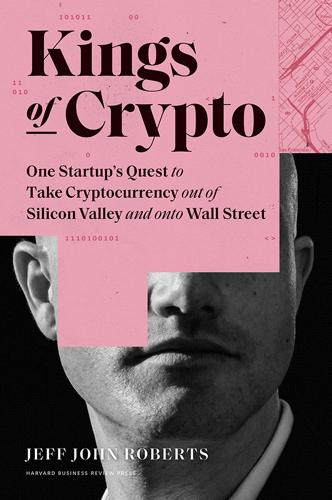
Kings of Crypto: One Startup's Quest to Take Cryptocurrency Out of Silicon Valley and Onto Wall Street
by
Jeff John Roberts
Published 15 Dec 2020
By 2012, when Brian started Coinbase, a bitcoin was no longer worth pennies but a few dollars. Now, millions of people around the world knew what it was and how to use it. What people—including Assistant US Attorney Katie Haun and her boss—still did not know was, who was behind it? There was only that nine-page paper by the person with the strange pseudonym: Satoshi Nakamoto. So who is Satoshi Nakamoto? This is a taboo topic among most bitcoin believers, who don’t like to discuss it. This is by design. As authors Paul Vigna and Michael Casey explain in The Age of Cryptocurrency, bitcoin is a religion as much as it is a technology. And like every good religion, its origin story is surrounded in sacred mystery.
…
“The formative internet companies had been built, and the revolution had happened.” He was wrong, of course. The internet revolution is still blazing, and entrepreneurs, for better and worse, are using it to remake our homes and our lives. And in late 2008, a mysterious person using the name Satoshi Nakamoto published a nine-page white paper on the web that would bring that same revolution to money. Brian discovered that paper a year later. It was Christmas, and Brian was in his old room back at his parents’ house in San Jose, reading tech news on the internet, as usual. Someone had posted Satoshi’s paper on a computer discussion forum.
…
In startup land, it was the equivalent of cutting off a spouse from a joint bank account. But it had to be done. The point on which Brian and Ben had disagreed wasn’t an aesthetic one or even a strategic one. It was an existential one. Their dispute turned on a near-religious clash about what bitcoin was supposed to be. When the pseudonymous Satoshi Nakamoto revealed bitcoin in his nine-page paper, he described the invention of a new and decentralized technology. That word, decentralized, is critical. It meant no single person, company, or government could control the network on which bitcoin is built. Meanwhile, people who bought and sold bitcoin could not rely on a bank or anyone else to manage their stash of digital money.
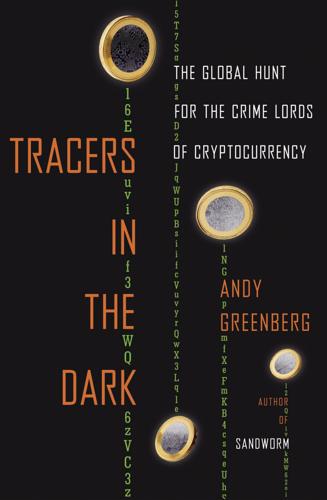
Tracers in the Dark: The Global Hunt for the Crime Lords of Cryptocurrency
by
Andy Greenberg
Published 15 Nov 2022
GO TO NOTE REFERENCE IN TEXT CHAPTER 3: THE AUDITOR none fared worse than Armenia: Margaret Shapiro, “Armenia’s ‘Good Life’ Lost to Misery, Darkness, Cold,” Washington Post, Jan. 30, 1993, washingtonpost.com. GO TO NOTE REFERENCE IN TEXT “Participants can be anonymous”: Satoshi Nakamoto, email with subject line “Bitcoin P2P e-cash paper,” Oct. 31, 2008, archived by Satoshi Nakamoto Institute, nakamotoinstitute.org. GO TO NOTE REFERENCE IN TEXT CHAPTER 4: CRYPTOANARCHY Gavin Andresen giving a talk: Amherst Media, “Making Money—Gavin Andresen @ Ignite Amherst,” Feb. 17, 2011, youtube.com. GO TO NOTE REFERENCE IN TEXT chronicled the cypherpunk movement: Andy Greenberg, This Machine Kills Secrets (New York: Dutton, 2012).
…
GO TO NOTE REFERENCE IN TEXT the first payment with real value: Galen Moore, “10 Years After Laszlo Hanyecz Bought Pizza with 10K Bitcoin, He Has No Regrets,” CoinDesk, May 22, 2020, coindesk.com. GO TO NOTE REFERENCE IN TEXT “Some linking is still unavoidable”: Satoshi Nakamoto, “Bitcoin: A Peer-to-Peer Electronic Cash System,” Oct. 31, 2008, archived by Satoshi Nakamoto Institute, nakamotoinstitute.org. GO TO NOTE REFERENCE IN TEXT called a “change” address: For the Swiss and German researchers, see Elli Androulaki et al., “Evaluating User Privacy in Bitcoin,” in Financial Cryptography and Data Security, ed.
…
Transactions flowed from one address to another, with none of the names or other personal details that a bank or payment service like PayPal might collect. “Participants can be anonymous,” read one line in an email sent to a cryptography mailing list by the currency’s mysterious inventor, known as Satoshi Nakamoto. Bitcoin burrowed into the very center of Gambaryan’s mind, at the point where his obsessions with computers and forensic accounting converged. As an IRS investigator tasked with following the money, he considered the notion of anonymous digital cash vaguely foreboding. Who would pay taxes on these “anonymous” transactions?
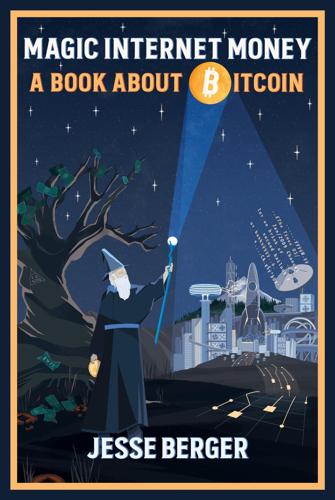
Magic Internet Money: A Book About Bitcoin
by
Jesse Berger
Published 14 Sep 2020
Edward Kitsis & Adam Horowitz, Tron: Legacy On October 31, 2008, Satoshi Nakamoto published the Bitcoin white paper,1 a manifesto for monetary independence. The nine-page paper unveiled the technical details and rationale for a robust new system that envisioned using digital signatures to authorize the transfer of scarce electronic coins. The transactions and whereabouts of every fraction of every coin would be documented on a public ledger that would be freely available for download and inspection. The name Satoshi Nakamoto is a pseudonym. Satoshi’s true identity is unknown, and that anonymity has forever shrouded Bitcoin in mystery.
…
By converting chaotic energy into an orderly monetary system, it accurately compensates costly effort with value, and through proof-of-work, it methodically documents irrefutable evidence of its own authenticity. In this sense, Bitcoin is like catching lightning in a bottle, since it forges and secures trustworthy money from energy. 2.6 Fixed Supply: The Promised Land “The nature of Bitcoin is such that once version 0.1 was released, the core design was set in stone for the rest of its lifetime.” Satoshi Nakamoto, Creator of Bitcoin The Bitcoin network does not actually consume energy itself, but computer processing power, which is fueled by energy. This consumption process is known as “mining,” and it performs two very valuable tasks. First, mining enables Bitcoin’s native monetary units, called “bitcoins,” to be found and spent, and second, it provides security to the network.
…
As of May 2020, with the US national debt at a staggering $25 trillion (over $75,000 per American), it is worth asking – on what basis is the fiat monetary system credible? Source: US Federal Reserve 3.5 Fiat Functionality “The root problem with conventional currency is all the trust that’s required to make it work. The central bank must be trusted not to debase the currency, but the history of fiat currencies is full of breaches of that trust.” Satoshi Nakamoto, Creator of Bitcoin Today, fiat functions as money because it satisfies the three primary functions – albeit tenuously. Medium of exchange: Legal tender laws require that, to varying degrees, fiat be used within a country for commerce. Legally enforcing fiat assures a high degree of acceptability, even if it is somewhat constrained by borders and red tape.
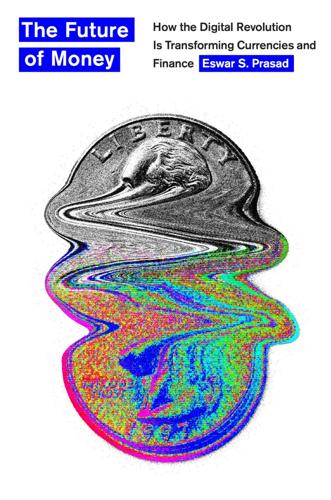
The Future of Money: How the Digital Revolution Is Transforming Currencies and Finance
by
Eswar S. Prasad
Published 27 Sep 2021
The original blog post is available at Satoshi Nakamoto, “Bitcoin P2P e-Cash Paper,” Satoshi Nakamoto Institute (blog), October 31, 2008, https://satoshi.nakamotoinstitute.org/emails/cryptography/1/. The paper (Nakamoto 2008), at https://bitcoin.org/bitcoin.pdf, succinctly sums up the objective of Bitcoin: “A purely peer-to-peer version of electronic cash would allow online payments to be sent directly from one party to another without going through a financial institution.” The quoted text is from Satoshi Nakamoto, “Bitcoin Open Source Implementation of P2P Currency,” Satoshi Nakamoto Institute (blog), February 11, 2009, https://satoshi.nakamotoinstitute.org/posts/p2pfoundation/1/.
…
The April 12, 2009, email between Satoshi Nakamoto and Mike Hearn that includes the text attributed to Nakamoto is archived here: “Satoshi Reply to Mike Hearn,” Satoshi Nakamoto Institute, April 12, 2009, https://nakamotostudies.org/emails/satoshi-reply-to-mike-hearn/. The website notes that this email was provided by Hearn and cannot be confirmed independently but appears consistent with many other Nakamoto writings. For more discussion of the twenty-one million limit, including some suggestive mathematical calculations, see David Canellis, “Here’s Why Satoshi Nakamoto Set Bitcoin’s Supply Limit to 21 Million,” TNW, July 8, 2019, https://thenextweb.com/hardfork/2019/07/08/heres-why-satoshi-nakamoto-set-bitcoin-supply-limit-to-21-million/.
…
Coinmarketcap.com has an up-to-date list of active cryptocurrencies, their prices, and market capitalization. It does not take much to issue one’s own cryptocurrency, so there were in fact a few thousand more cryptocurrencies as of December 2020, some with trivial or zero market value. The Building Blocks The quoted text is from Satoshi Nakamoto, “Bitcoin Open Source Implementation of P2P Currency,” Satoshi Nakamoto Institute (blog), February 11, 2009, https://satoshi.nakamotoinstitute.org/posts/p2pfoundation/1/. Cryptography For an engaging tour of cryptography, ranging from the ancient past to modern quantum cryptography, see Singh (1999). For a more comprehensive overview, see Kahn (1996).
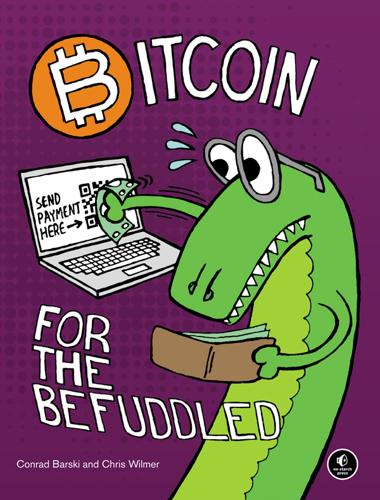
Bitcoin for the Befuddled
by
Conrad Barski
Published 13 Nov 2014
It is possible for the rules of hockey to change, but only if everyone agrees to the new rules. Bitcoin is the same way.” (http://www.research.utoronto.ca/what-is-bitcoin/) 3. We actually don’t know whether Satoshi Nakamoto is a man, a woman, or a group of people. 4. Hal Finney developed a reusable proof-of-work system that overlaps significantly with Bitcoin’s proof-of-work used in mining. 5. On March 6, 2014, a user account belonging to Satoshi Nakamoto posted on the P2Pfoundation forum to clarify that he was not Dorian Satoshi Nakamoto, a man who at the time was being harassed by journalists because they mistakenly believed he was the inventor of Bitcoin. 6. These are only rough estimates; the computing power of supercomputers and such projects is often measured in the number of floating-point operations per second (FLOPs).
…
A trusted central mediator such as PayPal can track payments and money transfers in a privately held account ledger, but it wasn’t clear how a group of strangers who do not trust each other could accomplish the same transactions dependably.4 Sometimes referred to as the Byzantine Generals’ Problem, this fundamental conundrum also emerges in computer science, specifically in how to achieve consensus on a distributed network. In 2008, the problem was elegantly solved by Bitcoin’s inventor, known pseudonymously as Satoshi Nakamoto. Satoshi’s significant breakthrough made it possible for a digital currency to exist without relying on a central authority. Satoshi described the solution to the Byzantine Generals’ Problem and the invention of Bitcoin in a white paper titled “Bitcoin: A Peer-to-Peer Electronic Cash System.”
…
Bitcoin Units As explained in Chapter 1, Bitcoin refers collectively to the entire currency system, whereas bitcoins are the units of the currency. Although the total currency supply is capped at 21 million bitcoins, each one can be subdivided into smaller denominations; for example, 0.1 bitcoins and 0.001 bitcoins. The smallest unit, a hundred millionth of a bitcoin (0.00000001 bitcoins), is called a satoshi in honor of Satoshi Nakamoto. As a result, goods can be priced in Bitcoin very precisely, and people can easily pay for those goods in exact change (e.g., a merchant can price a gallon of milk at 0.00152374 bitcoins, or 152,374 satoshis). Rather than writing the term bitcoins on price tags, merchants commonly use the abbreviated currency code BTC or XBT; 5 bitcoins would be written as 5 BTC.

Blockchain Revolution: How the Technology Behind Bitcoin Is Changing Money, Business, and the World
by
Don Tapscott
and
Alex Tapscott
Published 9 May 2016
Imagine a technology that could preserve our freedom to choose for ourselves and our families, to express these choices in the world, and to control our own destiny, no matter where we lived or were born. What new tools and new jobs could we create with those capabilities? What new businesses and services? How should we think about the opportunities? The answers were right in front of us, compliments of Satoshi Nakamoto. THE SEVEN DESIGN PRINCIPLES We believe that this next era could be inspired by Satoshi Nakamoto’s vision, designed around a set of implicit principles, and realized by the collaborative spirit of many passionate and equally talented leaders in the community. His grand vision was limited to money, not to some greater goal of creating a second generation of the Internet.
…
God being the ultimate in confessional discretion, no party would learn anything more about the other parties’ inputs than they could learn from their own inputs and the output.”4 His point was powerful: Doing business on the Internet requires a leap of faith. Because the infrastructure lacks the much-needed security, we often have little choice but to treat the middlemen as if they were deities. A decade later in 2008, the global financial industry crashed. Perhaps propitiously, a pseudonymous person or persons named Satoshi Nakamoto outlined a new protocol for a peer-to-peer electronic cash system using a cryptocurrency called bitcoin. Cryptocurrencies (digital currencies) are different from traditional fiat currencies because they are not created or controlled by countries. This protocol established a set of rules—in the form of distributed computations—that ensured the integrity of the data exchanged among these billions of devices without going through a trusted third party.
…
We believe the advent of a decentralized world-wide ledger coupled with powerful encryption to mask the identities of buyer and seller will be attractive to the art world.”28 The artist becomes what could be called a “rights monetizer” with the technology making deals and collecting revenue in real time. You could apply this same model to other fields as well. In science, a researcher could publish a paper to a limited audience of peers, as Satoshi Nakamoto did, and receive reviews and the credibility to publish to a larger audience, rather than assigning all rights to a scientific journal. The paper might even be available for free but other scientists could subscribe to a deeper analysis or threaded discussions with the author about it. She could make her raw data available or perhaps share data with other scientists as part of a smart contract.

Cryptoassets: The Innovative Investor's Guide to Bitcoin and Beyond: The Innovative Investor's Guide to Bitcoin and Beyond
by
Chris Burniske
and
Jack Tatar
Published 19 Oct 2017
Chapter 1 1. https://www.stlouisfed.org/financial-crisis/full-timeline; http://historyofbitcoin.org/. 2. http://www.gao.gov/assets/660/651322.pdf. 3. http://wayback.archive.org/web/20120529203623/http://p2pfoundation.ning.com/profile/SatoshiNakamoto. 4. http://observer.com/2011/10/did-the-new-yorkers-joshua-davis-nail-the-identity-of-bitcoin-creator-satoshi-nakamoto/. 5. https://en.wikipedia.org/wiki/Satoshi_Nakamoto#cite_note-betabeat-12. 6. http://www.economist.com/news/business-and-finance/21698060-craig-wright-reveals-himself-as-satoshi-nakamoto. 7. https://www.wired.com/2016/05/craig-wright-privately-proved-hes-bitcoins-creator/. 8. http://www.economist.com/news/finance-and-economics/21698294-quest-find-satoshi-nakamoto-continues-wrightu2019s-wrongs. 9. http://www.nytimes.com/2008/03/17/business/17bear.html?_r=0. 10. https://www.federalreserve.gov/newsevents/reform_bearstearns.htm. 11. http://www.wsj.com/articles/SB123051066413538349. 12.
…
In the four months of August to October 2008, an unprecedented series of changes occurred: Bitcoin.org was registered, Lehman Brothers filed for the largest bankruptcy in American history, Bank of America bought Merrill Lynch for $50 billion, the U.S. government established the $700 billion Troubled Asset Relief Program (TARP), and Satoshi Nakamoto published a paper that founded Bitcoin and the basis of blockchain technology.1 The entwinement of the financial collapse on the one hand and the rise of Bitcoin on the other is hard to ignore. The financial crisis cost the global economy trillions of dollars and burned bridges of trust between financial titans and the public.2 Meanwhile, Bitcoin provided a system of decentralized trust for value transfer, relying not on the ethics of humankind but on the cold calculation of computers and laying the foundation potentially to obviate the need for much of Wall Street.
…
The financial crisis cost the global economy trillions of dollars and burned bridges of trust between financial titans and the public.2 Meanwhile, Bitcoin provided a system of decentralized trust for value transfer, relying not on the ethics of humankind but on the cold calculation of computers and laying the foundation potentially to obviate the need for much of Wall Street. WHO IS SATOSHI NAKAMOTO? Referring to Satoshi as “he” is simply a matter of convenience because to this day no one knows exactly who or even what Satoshi is. He, she, they, or it remains totally anonymous. On a profile page Satoshi created for the P2P Foundation—which he used to communicate with others as he spun up Bitcoin—he wrote that he was a 37-year-old male living in Japan.3 Yet outside of Japan, fact digging has led people to believe Satoshi resided in the United Kingdom, North America, Central America, South America, or even the Caribbean.
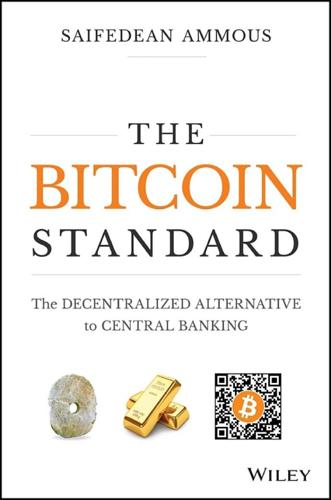
The Bitcoin Standard: The Decentralized Alternative to Central Banking
by
Saifedean Ammous
Published 23 Mar 2018
It is the inherent nature of Bitcoin that such knowledge cannot be delegated or outsourced. There is no alternative to personal responsibility for anyone interested in using this network, and that is the real investment that needs to be made to get into Bitcoin. Notes 1 The full email can be found on the Satoshi Nakamoto Institute archive of all known Satoshi Nakamoto writings, available at www.nakamotoinstitute.org 2 The now‐defunct New Liberty Standard. 3 Nathaniel Popper, Digital Gold (Harper, 2015). 4 In other words, in the eight years it has been a market commodity, a bitcoin has appreciated around almost eight million‐fold, or, precisely 793,513,944% from its first price of $0.000994 to its all‐time high at the time of writing, $7,888.
…
Library of Congress Cataloging‐in‐Publication Data is Available: ISBN 9781119473862 (Hardcover) ISBN 9781119473893 (ePDF) ISBN 9781119473916 (ePub) Cover Design: Wiley Cover Images: REI stone © Danita Delimont/Getty Images; gold bars © Grassetto/Getty Images; QR code/Courtesy of Saifedean Ammous To my wife and daughter, who give me a reason to write. And to Satoshi Nakamoto, who gave me something worth writing about. About the Author Saifedean Ammous is a Professor of Economics at the Lebanese American University and member of the Center on Capitalism and Society at Columbia University. He holds a PhD in Sustainable Development from Columbia University.
…
But its mere existence is an insurance policy that will remind governments that the last object the establishment could control, namely, the currency, is no longer their monopoly. This gives us, the crowd, an insurance policy against an Orwellian future. Nassim Nicholas Taleb January 22, 2018 Prologue On November 1, 2008, a computer programmer going by the pseudonym Satoshi Nakamoto sent an email to a cryptography mailing list to announce that he had produced a “new electronic cash system that's fully peer‐to‐peer, with no trusted third party.”1 He copied the abstract of the paper explaining the design, and a link to it online. In essence, Bitcoin offered a payment network with its own native currency, and used a sophisticated method for members to verify all transactions without having to trust in any single member of the network.
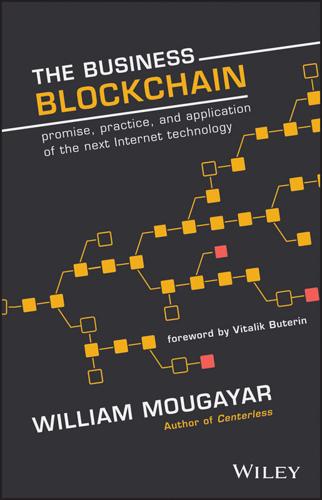
The Business Blockchain: Promise, Practice, and Application of the Next Internet Technology
by
William Mougayar
Published 25 Apr 2016
Although cryptographers, mathematicians and coders have been working on increasingly specific and advanced protocols in order to get stronger and stronger privacy and authenticity guarantees out of various systems—from electronic cash to voting to file transfer—progress was slow for over 30 years. The innovation of the blockchain—or, more generally, the innovation of public economic consensus by Satoshi Nakamoto in 2009—proved to be the one missing piece of the puzzle that single-handedly gave the industry its next giant leap forward. The political environment seemed to almost snap into place: the great financial crisis in 2008 spurred growing distrust in mainstream finance, including both corporations and the governments that are normally supposed to regulate them, and was the initial spark that drove many to seek out alternatives.
…
Tomorrow, we will perform the equivalent of “googling” to verify records, identities, authenticity, rights, work done, titles, contracts, and other valuable asset-related processes. There will be digital ownership certificates for everything. Just like we cannot double spend digital money anymore (thanks to Satoshi Nakamoto's invention), we will not be able to double copy or forge official certificates once they are certified on a blockchain. That was a missing piece of the information revolution, which the blockchain fixes. I still remember the initial excitement around being able to track a shipped package on the Web when FedEx introduced this capability for the first time in 1994.
…
Separately, these fields have existed for a long time, but for the first time, they have together intersected harmoniously and morphed inside blockchain technology. Game theory is ‘the study of mathematical models of conflict and cooperation between intelligent rational decision-makers.”4 And this is related to the blockchain because the Bitcoin blockchain, originally conceived by Satoshi Nakamoto, had to solve a known game theory conundrum called the Byzantine Generals Problem.5 Solving that problem consists in mitigating any attempts by a small number of unethical Generals who would otherwise become traitors, and lie about coordinating their attack to guarantee victory. This is accomplished by enforcing a process for verifying the work that was put into crafting these messages, and time-limiting the requirement for seeing untampered messages in order to ensure their validity.

Life After Google: The Fall of Big Data and the Rise of the Blockchain Economy
by
George Gilder
Published 16 Jul 2018
The assembled masters of the high-tech universe may have understood him about as well as the mathematicians in Königsberg understood the twenty-four-year-old Gödel in 1930, though the audience at Asilomar had advance notice of the significance of Buterin’s work. Buterin succinctly described his company, Ethereum, launched in July 2015, as a “blockchain app platform.” The blockchain is an open, distributed, unhackable ledger devised in 2008 by the unknown person (or perhaps group) known as “Satoshi Nakamoto” to support his cryptocurrency, bitcoin. Buterin’s meteoric rise was such that soon after the Asilomar conference the central bank of Singapore announced that it was moving forward with an Ethereum-backed currency, and other central banks, including those of Canada and Russia, are investigating its potential as a new foundation for money transactions and smart contracts.
…
The three young men often talked technology and libertarian philosophy late into the Atherton nights and worked on their companies nearly all other hours. All of them shared and re-enforced each other’s frustration with Silicon Valley’s software obsession and abandonment of manufacturing. And all of them soon came to see this abandonment as a gigantic opportunity. CHAPTER 11 The Heist In January 2009, Satoshi Nakamoto announced “the first release of Bitcoin, a new electronic cash system that uses a peer-to-peer network to prevent double-spending. It’s completely decentralized with no server or central authority.” He went on to specify: Total circulation will be 21,000,000 coins. It’ll be distributed to network nodes when they make blocks, with the amount cut in half every 4 years.
…
Central Bankers meet solemnly to decide on levels of “quantitative easing”—on how many trillions of dollars of bonds to buy or sell, thus issuing new money into a flagging economy or sopping up money from a booming one. They hope against hope that these metafictional money fabrications can somehow overflow into the real world of economics and job creation. Lots of luck with that. Perhaps they should consult a novelist. Meanwhile, somewhere over the rainbow, a possibly mythical man, the pseudonymous Satoshi Nakamoto, invents a new currency called bitcoin that is spurring a new financial system. This is not fiction, although Stephenson’s fingerprints are all over the story, which uncannily resembles the made-up world of Reamde. According to some of bitcoin’s protagonists, such as the legendary Hal Finney, the first user of the program, it emulates “Galt Gulch” in Ayn Rand’s Atlas Shrugged.4 Consider it a virtual domain where titans of finance can retreat to conduct their business out of the reach of governments.
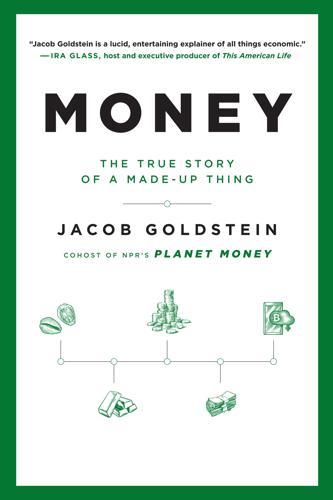
Money: The True Story of a Made-Up Thing
by
Jacob Goldstein
Published 14 Aug 2020
It was called “Bitcoin: A Peer-to-Peer Electronic Cash System.” Bitcoin! The stranger who invented bitcoin was almost certainly not named Satoshi Nakamoto, but that was the name on the top of the bitcoin paper, and the name in the email to Wei Dai, and the name the creator (or creators) of bitcoin used to talk up bitcoin on the crypto email lists. Nobody knew then, and nobody knows as I write this, who Satoshi Nakamoto is (or are) or was (or were). Satoshi Nakamoto could be a cypherpunk living in an underground bunker in New Zealand or an executive at a bank in London. She might be a priest or he might be a criminal or they might be a cabal scheming to take over the world.
…
She might be a priest or he might be a criminal or they might be a cabal scheming to take over the world. But fundamental to the genius of bitcoin is this: it doesn’t matter at all who Satoshi Nakamoto is. It would be catastrophic if the CEO of a bank was delusional, or the chairman of the Federal Reserve was inclined to commit fraud. Those institutions depend on the choices made by the people in charge. The point of bitcoin is that no one is in charge. (You could also say that everyone is in charge, but that amounts to the same thing.) In classic cypherpunk style, Satoshi (“Satoshi”) owns no patents on bitcoin. The full codebase was published online for everyone to see and use and tweak however they want.
…
The full codebase was published online for everyone to see and use and tweak however they want. Money is always and everywhere based on trust. Modern currency is based on trust in the government that issues it. Bitcoin is also based on trust. But the dream of bitcoin is that you don’t have to trust a government, or a bank, or Satoshi Nakamoto; you just have to trust the code. And the code for bitcoin is very clever! Satoshi took ideas from Back’s hashcash and Wei Dai’s b-money and added to them a few brilliant twists that seemed to make bitcoin the thing cypherpunks had been dreaming of for years: an anonymous(ish), money(ish) thing that buyers and sellers could exchange over the internet without any bank or tech company in the middle.
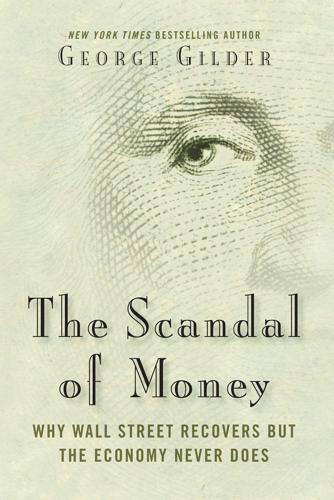
The Scandal of Money
by
George Gilder
Published 23 Feb 2016
The lesson of information theory is that irreversible money cannot be the measure of itself, defined by the values it gauges. It is part of a logical system, and like all such systems it must be based on values outside itself. It must be rooted in the entropy of irreversible time. When the bitcoin innovators Satoshi Nakamoto and Nick Szabo sought to invent new forms of money, they explicitly designed algorithms that nullified the effects of technological advance in computer technology. As Moore’s Law improves the computer systems used to validate transactions and integrate them with the bitcoin blockchain, for example, the “proof of work” challenge in the algorithm becomes proportionately more difficult and the reward smaller.
…
Names and passwords and other authentication details do not need to be stored. An effort to hack one of the computers and change the blockchain ledger would be pointless, as the correct ledger would exist on myriad other computers. Gold, however, remains the leading player. In fact, bitcoin’s mysterious, pseudonymous founder, one “Satoshi Nakamoto,” specifically mimicked gold in developing his digital money, which becomes more difficult to “mine” with the passage of time. Its value, like gold’s, is ultimately based on its scarcity. It is not a competitor with gold but an Internet money that simulates the properties of the monetary metal and offers a path toward a gold-inspired standard for the net.
…
A shrewd analyst and historian of the evolution of money, Szabo in the 1990s threw a wrench into the Drexlerian nanotech movement, with its dream of building new molecules from scratch using nano-replicators, offering a prize to anyone who could create a macro-replicator out of Lego blocks or other toy-like potential replicators. If you can’t build a macro-replicator, you probably cannot build one with nano-pincers and electron microscopes.4 There was no one to claim the prize. Since then Szabo has been focusing on the easier enigmas of money and gold. Though he denies it, Szabo has long been suspected of being Satoshi Nakamoto, and several analyses have shown his prose above all others to conform to the idiosyncrasies of Nakamoto’s bitcoin paper. Known in the early 1990s for his canny ruminations on strategies for network anonymity and pseudonymity, Szabo now writes a pithy, original, and very occasional blog on money matters called Unenumerated5 but is otherwise scarcely or skittishly represented on the Internet.
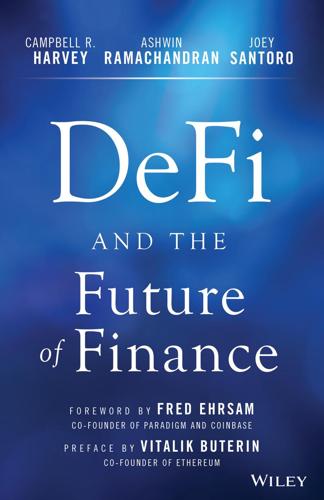
DeFi and the Future of Finance
by
Campbell R. Harvey
,
Ashwin Ramachandran
,
Joey Santoro
,
Vitalik Buterin
and
Fred Ehrsam
Published 23 Aug 2021
PayPal,3 founded more than 20 years ago, is a forerunner in the payments space; in 2017, seven of the largest U.S. banks added their own payment system called Zelle.4 An important commonality of these cost-reducing fintech advances is that they rely on the centralized backbone of the current financial infrastructure. BITCOIN AND CRYPTOCURRENCY The dozens of digital currency initiatives beginning in the early 1980s all failed.5 The landscape shifted, however, with the publication of the famous Satoshi Nakamoto Bitcoin white paper6 in 2008, which presents a peer-to-peer system that is decentralized and uses the concept of blockchain. Invented in 1991 by Haber and Stornetta,7 blockchain was initially primarily envisioned to be a time-stamping system to keep track of different versions of a document.
…
PayPal, founded as Confinity in 1998, did not begin offering a payments function until it merged with X.com in 2000. 4. Other examples include Cash App, Braintree, Venmo, and Robinhood. 5. C. R. Harvey, “The History of Digital Money,” 2020, https://faculty.fuqua.duke.edu/~charvey/Teaching/697_2020/Public_Presentations_697/History_of_Digital_Money_2020_697.pdf. 6. Satoshi Nakamoto, “Bitcoin: A Peer-to-Peer Electronic Cash System,” 2008, https://bitcoin.org/bitcoin.pdf. 7. Stuart Haber and W. Scott Stornetta, “How to Time-Stamp a Digital Document,” Journal of Cryptology, 3, no. 2 (1991), https://dl.acm.org/doi/10.1007/BF00196791. 8. Adam Back, “Hashcash – A Denial of Service Counter-Measure,” August 1, 2002, http://www.hashcash.org/papers/hashcash.pdf. 9.
…
Finally, it is difficult for the regulator to hire in this space because potential employees have many other options. NOTES 1. Bloomberg, “How to Steal $500 Million in Cryptocurrency,” Fortune, January 31, 2018, https://fortune.com/2018/01/31/coincheck-hack-how/. 2. Szabo, Nick. 1997. “Formalizing and Securing Relationships on Public Networks,” Satoshi Nakamoto Institute, https://nakamotoinstitute.org/formalizing-securing-relationships/. 3. dForce, https://dforce.network/; bZx, bZeroX, 2021, https://bzx.network/; Andre Shevchenko, “DForce Hacker Returns Stolen Money as Criticism of the Project Continues,” Cointelegraph, April 22, 2020, https://cointelegraph.com/news/dforce-hacker-returns-stolen-money-as-criticism-of-the-project-continues; Adrian Zmudzinski, “Decentralized Lending Protocol bZx Hacked Twice in a Matter of Days,” Cointelegraph, February 18, 2020, https://cointelegraph.com/news/decentralized-lending-protocol-bzx-hacked-twice-in-a-matter-of-days; Quantstamp, 2017–2020, https://quantstamp.com/; Trail of Bits, https://www.trailofbits.com/; PeckShield, 2018, https://blog.peckshield.com/. 4.
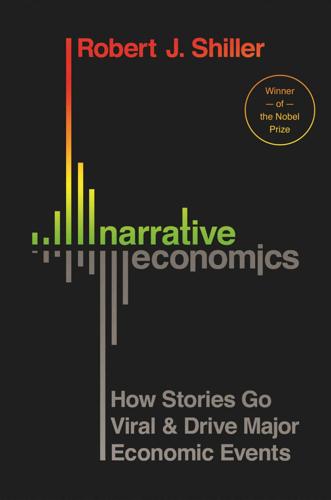
Narrative Economics: How Stories Go Viral and Drive Major Economic Events
by
Robert J. Shiller
Published 14 Oct 2019
Bitcoin as a Human-Interest Narrative The Bitcoin narrative is a motivating narrative for the cosmopolitan class around the world, for people who aspire to join that class, and for those who identify with advanced technology. And like many economic narratives, Bitcoin has its celebrity hero, Satoshi Nakamoto, who is a central human-interest story for Bitcoin. Adding to the romance of the Bitcoin narrative is a mystery story, for Satoshi Nakamoto has never been seen by anyone who will testify to having seen him. One early Bitcoin codeveloper said that Satoshi communicated only by email and that the two had never met in person.8 On its website, Bitcoin.org says only, “Satoshi left the project in late 2010 without revealing much about himself.”
…
The Merkle tree and the digital signature algorithm are essential elements of the Bitcoin protocol described in the original Bitcoin paper signed by Satoshi Nakamoto in 2008. The equilibrium of the congestion queuing game is described in Huberman et al., 2017. 4. Proudhon 1923 [1840], p. 293. 5. Sterlin Lujan, “Bitcoin Was Built to Incite Peaceful Anarchy,” https://news.bitcoin.com/bitcoin-built-incite-peaceful-anarchy/. Passage is dated January 9, 2016. 6. Ross, 1991, p. 116. 7. Himanen, 2001. 8. Zoë Bernard, “Satoshi Nakamoto was weird, paranoid, and bossy, says early Bitcoin developer who exchanged hundreds of emails with the mysterious crypto creator,” Business Insider, May 30, 2018, http://www.businessinsider.com/satoshi-nakamoto-was-weird-and-bossy-says-bitcoin-developer-2018-5.
…
At one point, the total value of Bitcoin exceeded US $300 billion. But Bitcoin has no value unless people think it has value, as its proponents readily admit. How did Bitcoin’s value go from $0 to $300 billion in just a few years? The beginnings of Bitcoin date to 2008, when a paper titled “Bitcoin: A Peer-to-Peer Electronic Cash System,” signed by Satoshi Nakamoto, was distributed to a mailing list. In 2009, the first cryptocurrency, called Bitcoin, was launched based on ideas in that paper. Cryptocurrencies are computer-managed public ledger entries that can function as money, so long as people value these entries as money and use them for purchases and sales.
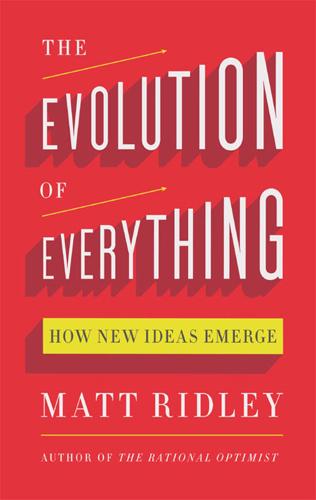
The Evolution of Everything: How New Ideas Emerge
by
Matt Ridley
Forensic analysis of his style, his idiosyncrasies, his likely age and the pattern of his activity has led the author Dominic Frisby and others – including a team of forty forensic linguists from Birmingham University – to the conclusion that Satoshi Nakamoto is probably Nick Szabo. Suspiciously, the normally prolific Szabo went unusually silent around the time Satoshi Nakamoto became active, and vice versa. However, Szabo has denied on Twitter that he is Satoshi. (Some still think that he and Hal Finney collaborated as Satoshi, giving each deniability.) Szabo himself keeps a low profile. No photograph of him can be found on the net. Whoever he is, ‘Satoshi Nakamoto’ knows a lot about computer programming and economic history – a rare combination. There is little doubt that bitcoin is one of the most significant inventions of our lifetime (though I doubt it would have remained uninvented if Satoshi had not existed: someone else would have come up with some form of self-verifying currency).
…
Then there was e-gold, a digital payments system run from the Caribbean by an oncologist called Doug Jackson that rocketed to $1.5 billion in transactions before being shut down on the grounds that it was allowing illegal money transmission. Governments do not take kindly to money that is outside their control. Hence the shyness of bitcoin’s founder. The mysterious founder Who is Satoshi Nakamoto? Newsweek magazine thought it had found him in March 2014 when it identified a sixty-four-year-old Japanese-American programmer named Dorian Satoshi Nakamoto living near Los Angeles. The baffled and beleaguered Dorian, an unemployed man in poor health with a clumsy command of English, protested that he had nothing to do with bitcoin, did not understand what it was, and thought it was called ‘bitcom’.
…
Clearly, he was trying to think how to recreate online the key steps in the evolution of real money. Some years went by. Then, on 18 August 2008, a month before the financial crisis broke in earnest, a new domain name was registered anonymously: bitcoin.org. Two weeks later, somebody with the user name ‘Satoshi Nakamoto’ posted a nine-page paper outlining an idea for a peer-to-peer electronic cash system called bitcoin. The bitcoin system went live a few months later, on the day the British government reported its second bailout of the banks, an event referred to by Satoshi, who quoted a headline from The Times in his announcement of bitcoin’s birth.

Machine, Platform, Crowd: Harnessing Our Digital Future
by
Andrew McAfee
and
Erik Brynjolfsson
Published 26 Jun 2017
They change how people think about fairness and justice, how companies organize themselves and innovate, how governments approach taxation and trade, and so on. Economists think about exchange, a fundamental and universal human activity, so their biggest ideas on the subject have had a huge impact. Bitcoin: The Pseudonymous Revolution Satoshi Nakamoto’s ideas have also had a huge impact, even though nobody knows who he or she is.† On October 31, 2008, a person or group going by that name posted online a short paper titled “Bitcoin: A Peer-to-Peer Electronic Cash System.” It addressed a straightforward question: Why do online payments have to involve banks, credit card companies, and other financial intermediaries?
…
The miners and others who built the Bitcoin network were behaving just as Keynes had predicted, but with some fascinating twists. They weren’t madmen, and most of them weren’t in authority, but they were still “distilling their frenzy” not from some academic scribbler, but instead from a pseudonymous one: Satoshi Nakamoto. The Ledger, Not the Currency: Waking Up to the Blockchain’s Potential Throughout this time, most mainstream economists were skeptical, even dismissive, of Bitcoin’s potential as a rival to the world’s established currencies. Two of the main functions of any money, they pointed out, were a means of exchange (I give you these dollars or euros or yen and you give me that house or car or chicken dinner) and a store of value (my total net worth is X dollars, euros, or yen; with this amount of wealth I can buy so many houses, cars, or chicken dinners).
…
. §§ The parties involved in a blockchain transaction can decide to include a transaction fee, which will be awarded to the miner that creates the block. These voluntary fees are intended as an additional incentive to miners. ¶¶ Settlement risk is the possibility that one side of the transaction might not deliver the shares as promised once the other party has paid for them, or vice versa. ## Many believe that Szabo is, in fact, Satoshi Nakamoto. He has repeatedly denied this claim. *** Our literary agent is the eminently trustworthy Raphael Sagalyn. ††† There were fewer signals to Norton that the two of us would be good authors for them to work with. We’re grateful that they took a chance on us. ‡‡‡ If we were worried that Norton might not have enough money to pay us, we could include an escrow account or other contingency within the smart contract.

Bitcoin Billionaires: A True Story of Genius, Betrayal, and Redemption
by
Ben Mezrich
Published 20 May 2019
After an uneventful day spent commenting on a variety of hacking forums, Charlie had suddenly seen a strange little email that had been sent out to a cryptography mailing list. The email had come from someone named Satoshi Nakamoto. In the email, Satoshi had stated that he’d developed a brand-new virtual currency, which he’d then described, in detail, in an attached “white paper.” At first, Charlie had thought the email was a joke. Stupid bullshit, he’d told himself. Who was this Satoshi Nakamoto, anyway? Charlie looked around hacker forums for more background on this Satoshi character but could find nothing. Stranger still, Satoshi, who claimed to be a Japanese man in his midthirties, wrote his emails in perfect, idiomatic English.
…
No bank or government sits in judgment of transactions, or takes a piece of each slice of pie. Middlemen are replaced with math, or in the case of your example, an army of Charlie Buckets.” “And the Willy Wonka of Bitcoin,” Tyler said. “Who set all of this in motion: Satoshi Nakamoto.” Cameron knew from his reading that the creator of Bitcoin was no less mysterious than the fictional character from his analogy. On October 31, 2008, Satoshi Nakamoto had published his famous white paper titled: Bitcoin: A Peer-to-Peer Electronic Cash System, to the Cryptography Mailing List—“a low-noise moderated mailing list devoted to cryptographic technology and its political impact,” laying out “a new electronic cash system that’s fully peer-to-peer, with no trusted third party.”
…
Although the area had a reputation for being a bit of a party destination itself—not on par with Ibiza, but speckled with exclusive restaurants and summer outposts of notable Manhattan nightclubs—the twins had spent most of their time relaxing on the beach and devouring anything they could find on the subject of Bitcoin. At the time, not a single book on Bitcoin had been published; but by diving deep enough into the internet, the twins were able to find blog posts, Reddit posts, and articles written by early adopters, known as “Bitcoiners,”—as well as Satoshi Nakamoto’s original Bitcoin white paper. They’d also reached out by email to former professors at Harvard and Oxford, where they’d earned MBA degrees, to get more academic opinions on this new virtual currency. None of the professors they’d contacted—some of them among the most elite economics professors in the world—had ever heard of Bitcoin.

Blockchain: Blueprint for a New Economy
by
Melanie Swan
Published 22 Jan 2014
The blockchain industry is using these terms interchangeably sometimes because it is still in the process of shaping itself into what could likely become established layers in a technology stack. Bitcoin was created in 2009 (released on January 9, 20096) by an unknown person or entity using the name Satoshi Nakamoto. The concept and operational details are described in a concise and readable white paper, “Bitcoin: A Peer-to-Peer Electronic Cash System.”7 Payments using the decentralized virtual currency are recorded in a public ledger that is stored on many—potentially all—Bitcoin users’ computers, and continuously viewable on the Internet.
…
However, nearly every other US government agency—including FinCEN (financial crimes enforcement network), banking regulators, and the CFPB, SEC, CFTC, and DOJ—regulate Bitcoin as a currency.31 Chapter 2. Blockchain 2.0: Contracts From its very beginning, complexity beyond currency and payments was envisioned for Bitcoin; the possibilities for programmable money and contracts were baked into the protocol at its invention. A 2010 communication from Satoshi Nakamoto indicates that “the design supports a tremendous variety of possible transaction types that I designed years ago. Escrow transactions, bonded contracts, third-party arbitration, multiparty signature, etc. If Bitcoin catches on in a big way, these are things we’ll want to explore in the future, but they all had to be designed at the beginning to make sure they would be possible later.”32 As we’ll see in Chapter 3, these structures could be applied beyond financial transactions, to any kind of transaction—even “figurative” ones.
…
The key idea is that the decentralized transaction ledger functionality of the blockchain could be used to register, confirm, and transfer all manner of contracts and property. Table 2-1 lists some of the different classes and examples of property and contracts that might be transferred with the blockchain. Satoshi Nakamoto started by specifying escrow transactions, bonded contracts, third-party arbitration, and multiparty signature transactions. All financial transactions could be reinvented on the blockchain, including stock, private equity, crowdfunding instruments, bonds, mutual funds, annuities, pensions, and all manner of derivatives (futures, options, swaps, and other derivatives).
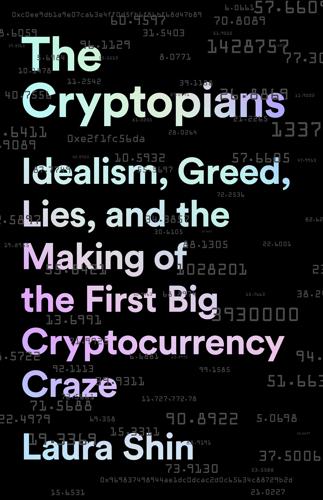
The Cryptopians: Idealism, Greed, Lies, and the Making of the First Big Cryptocurrency Craze
by
Laura Shin
Published 22 Feb 2022
Television and computer screens worldwide broadcast images of its twenty-five thousand employees streaming out of the firm’s global offices, carrying their belongings in bankers’ boxes.1 The same week, the sixty-thousand-strong “herd” of Merrill Lynch, the world’s largest brokerage, whose bull logo also symbolized Wall Street, suddenly found itself reporting to a group of what some employees saw as “hillbillies” at North Carolina–based Bank of America.2 In mid-October, the S&P 500 suffered its worst week since the Great Depression, while the Dow’s loss broke its Depression-era record.3 But the damage wasn’t contained to one week: year to year, as much as $8.4 trillion in investor wealth had vanished. And then, although it generated no news at the time, on October 31, a person or group named Satoshi Nakamoto published a white paper that described how people could bypass banks and use the internet to send each other money.4 Over the next nine years, during which a seven-year stretch of 0 to 0.25 percent interest rates managed to produce only the slowest economic recovery in history, this strange new network attracted a peculiar pastiche of supporters.5 Geeks were seduced by its magical fusion of cryptography, game theory, and the age-old ledger.
…
It has a healthy satellite industry that provides products and services based around it, and it has its own business and advocacy organizations, but there is no central Gold Corporation.”13 When the first printed edition arrived, he saw it featured twelve articles on topics such as the personality of anonymous Bitcoin creator Satoshi Nakamoto, the history of previous attempts at cryptocurrency, and the Bitcoin bubble of 2011. (The price had barely budged from Christmastime and was now about $5.) Scanning the magazine’s sixty-nine pages, Vitalik realized that nine of the twelve articles were by him. Concluding they must have had a hard time finding other writers, he was grateful for the opportunity.
…
Although Charles could be charming—even in a bright blue Oxford, pens in his pocket, the CEO could wow the troupe with his performance in promo videos—he could be discourteous, like the time he left his nail clippings on the Meierskappel Airbnb staircase. There were red flags too. One day in Meierskappel, when Charles was alone with Roxy, he told her he was Satoshi. He said he’d created Bitcoin in an attempt to distract himself after a woman had left him. Satoshi Nakamoto’s identity is the ultimate mystery in cryptocurrency, and he, she, or they are now, for all intents and purposes, a god in the crypto community for performing the ultimate cypherpunk act: creating a decentralized currency that no government can control and walking away for seemingly zero personal gain.

Number Go Up: Inside Crypto's Wild Rise and Staggering Fall
by
Zeke Faux
Published 11 Sep 2023
So instead, my computer broadcasts the transaction to all the computers that run the Bitcoin network, sending all the other Bitcoin people a message that says, “Hey, I’m transferring 1,000 Bitcoins to another account.” * * * — SO WHERE DID this idea come from? Bitcoin, the ur-cryptocurrency, was born on Halloween in 2008, at the climax of the subprime mortgage crisis, just after the storied investment bank Lehman Brothers failed. It began when a person or group going by the name Satoshi Nakamoto posted a message on a cryptography email list. “A purely peer-to-peer version of electronic cash would allow online payments to be sent directly from one party to another without the burdens of going through a financial institution,” Nakamoto wrote. Nakamoto’s identity was a mystery. But his idea appealed to libertarians, techies, and cypherpunks, who saw a way for people to create free markets on the internet that governments couldn’t control.
…
Thirteen years had passed since Bitcoin was invented—about as long as it took to get from the first websites to the iPhone—and the best argument anyone had for Bitcoin was that it was a financial bubble that would just keep growing forever? But “number go up” had become a kind of cult. It helped that Satoshi Nakamoto had completely disappeared and his or her real identity had never been revealed, giving the worshippers a mysterious and absent god. The aisles were jammed when the emcee introduced two men who seemed to be the stars of the show, judging by the riotous applause. Max Keiser, a Bitcoin podcaster, emerged first, in a white suit and purple sunglasses, to pounding EDM.
…
Do you want to continue with this transaction?” I felt like Oyet was probably right. But I told her to go ahead. Once my money was on Coinbase, I had to trade it for Ether, which was easy enough. Coinbase works just like E-Trade, except that instead of Apple stock, you’re buying and selling cryptocurrencies. It’s not exactly what Satoshi Nakamoto had in mind when he invented the first peer-to-peer electronic cash system—Coinbase is simply taking the place of your online trading site. But exchanges like Coinbase are the way nearly everybody buys Bitcoin, Ether, or any other coins. Buying Ether on Coinbase was just the first step. I learned that to get my Mutant Ape, I’d have to transfer my coins to one of the decentralized services that allows you to hold your own crypto on your computer, with no intermediary.
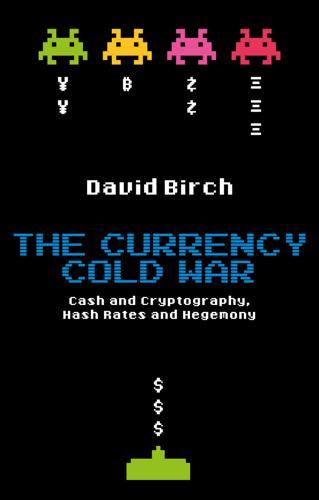
The Currency Cold War: Cash and Cryptography, Hash Rates and Hegemony
by
David G. W. Birch
Published 14 Apr 2020
Meanwhile, as governments and companies fight over who gets to define our future fiat-backed currency system, we cannot discount the role of decentralized alternatives such as Bitcoin, even as sideline players. David and I might disagree on this, but I see post-Covid-19 political fragmentation breeding demand for Satoshi Nakamoto’s invention, which will represent an alternative – if not a more stable – store of value. Trust in both governments and corporate gatekeepers will be challenged by Covid-19 politics. Those who bemoan the lack of accountability in unprecedented fiscal and monetary stimulus packages could be very amenable to a new idea of money.
…
There is no need for an in-depth history of Bitcoin here (for that, I strongly recommend Paul Vigna and Michael Casey’s The Age of Cryptocurrency), but it is useful to highlight a few points that will be relevant to our discussion about forms of digital currency later on. Bitcoin The Bitcoin story is, by now, well known. A person or persons unknown, under the pseudonym Satoshi Nakamoto, published a white paper setting out how to create a person-to-person e-cash system without a central system operator or database (Nakamoto 2008). At the core of the Bitcoin system were three main concepts: to replace a central database with a shared ledger, to use a new consensus technique to build that ledger absent a central coordinator (this is the ‘Nakamoto consensus’ that uses ‘proof of work’ to determine which version of the ledger is correct), and to use a particular kind of mathematical puzzle to incentivize this proof of work.
…
Chapter 2 Technology as catalyst [Bitcoin] is a remarkable cryptographic achievement … The ability to create something which is not duplicable in the digital world has enormous value … Lots of people will build businesses on top of that. — Eric Schmidt, executive chairman of Google (2013) Whether Bitcoin is the future of money or not, there is no doubt it was the release of Satoshi Nakamoto’s now-famous white paper in 2008 which catalyzed the new era of e-cash that may well lead to digital currencies being put to mainstream use in the foreseeable future. Schmidt’s point is surely correct: people will build businesses on top of cryptocurrencies. Perhaps some of those businesses will form a new DeFi system that will overthrow the IMFS and all of its institutions.

Radical Technologies: The Design of Everyday Life
by
Adam Greenfield
Published 29 May 2017
But all the social and intellectual heavy lifting begins now. 5 Cryptocurrency The computational guarantee of value All written accounts of the technological development we know as “the blockchain” begin and end the same way. They note its origins in the cryptocurrency called Bitcoin, and go on to explain how Bitcoin’s obscure, pseudonymous, possibly even multiple inventor “Satoshi Nakamoto” used it to solve the problems of trust that had foxed all previous attempts at networked digital money. They all make much of the blockchain’s potential to transform the way we exchange value, in every context and at every level of society. And they all gesture at the exciting possibilities that lie beyond currency: the world of smart contracts, distributed applications, autonomous organizations and post-human economies, all mediated by “trustless” cryptographic techniques.
…
Perhaps people simply had more pressing concerns on their mind, and weren’t necessarily inclined to take a wild leap into the technological unknown. Or maybe that’s looking at things the wrong way around. Maybe a time of cratering confidence in existing institutions is precisely the correct moment at which to propose something fundamentally new. Enter “Satoshi Nakamoto.”2 Nakamoto’s was the sole name on a nine-page paper describing the proposed design of a new digital currency, first posted to the Cryptography mailing list on Halloween 2008, and in one or two other places around the internet soon thereafter.3 There is still very little we can say about “him” for sure, even whether he wasn’t actually a team of close collaborators producing work under a collective pseudonym.
…
It sometimes seems that every age gets the technological icons it deserves, and if so it would be hard to invent a character more pungently appropriate to our own than Vitalik Buterin. Though an identifiable, individual, flesh-and-blood human being, Buterin is in every other way almost as much of a cipher as the mysterious Satoshi Nakamoto. We know a few biographical facts; we know too that he is evidently a fierce believer in the decentralization of power. But otherwise he is a blank. So little personal information about him is available that it’s all but impossible to get a sense of who he is, or what values he might cherish beyond this one core conviction.1 Born in Russia in 1994, Buterin was just shy of twenty when he dropped out of Ontario’s Waterloo University, spurred by a $100,000 grant from the foundation of libertarian venture capitalist Peter Thiel.

Easy Money: Cryptocurrency, Casino Capitalism, and the Golden Age of Fraud
by
Ben McKenzie
and
Jacob Silverman
Published 17 Jul 2023
A powerful narrative developed from the tragedy, that of regular people getting screwed over by the elites. On the left, this helped inspire the Occupy Wall Street movement. On the right, it was the Tea Party. On the internet, through a pseudonymous author (or authors), another story was born. On Halloween night 2008, someone or some people calling themselves Satoshi Nakamoto published what would come to be known as the Bitcoin white paper. We still don’t know who Satoshi was, but their white paper would have a profound impact on financial innovation and the future of digital money. Satoshi had a clear vision: “A purely peer-to-peer version of electronic cash would allow online payments to be sent directly from one party to another without going through a financial institution. . . .
…
Some tried to blur this essentially corporate dynamic by paying lip service to decentralization, or developing a foundation, or describing developers as volunteers. But these were still business ventures pushing what looked like digital securities. The goal was to make these companies and digital assets rise in value, like any business enterprise. As for Bitcoin, it’s true we don’t know who Satoshi Nakamoto is, but it was someone or some people. The Bitcoin white paper was not brought down a mountain by Moses. And despite the high-minded goals of its authors, over time, Bitcoin, or at least the economy surrounding it, has proven highly centralized, dependent on whales, major exchanges, and other institutional gatekeepers.
…
But the reality is that Bitcoin’s ownership is actually extraordinarily centralized, concentrated in a tiny group of whales and mining pools. In fact, just two mining pools account for 51 percent of its global hash rate, meaning just two large groups control the majority of new Bitcoin created. Additionally, just because we don’t know who came up with Bitcoin originally doesn’t mean no one did. Whoever Satoshi Nakamoto is, it’s a real person or real people. Once again, code does not fall from the sky. One day we may well find out who started this whole nonsense. If so, break out the popcorn, law nerds. Regardless, by the summer of 2022, two things were clear on the otherwise murky regulatory front: (1) The law considers Bitcoin a commodity—cat’s out of the bag on that sadly—and (2) there was a massive battle between the CFTC and the SEC for jurisdiction over the 20,000 or so cryptocurrencies out there.

The Industries of the Future
by
Alec Ross
Published 2 Feb 2016
Bitcoin came about both as a result of declining trust in the traditional financial system during the financial crisis and because of its technological advance in creating a trustable mechanism for monetary exchange online. On October 31, 2008, a research paper, “Bitcoin: A Peer-to-Peer Electronic Cash System,” was published on a cryptography listserv by a mysterious author identified as “Satoshi Nakamoto” who has kept his/her (their?) identity unknown. It called for the creation of the world’s “first decentralized digital currency.” Satoshi Nakamoto condemned state-based currencies: The root problem with conventional currency is all the trust that’s required to make it work. The central bank must be trusted not to debase the currency, but the history of fiat currencies is full of breaches of that trust.
…
It would never be accepted by the system, since the millions of copies of the ledger that reside throughout the rest of the Bitcoin network would not have any record of this counterfeit coin or its invented history. A widely distributed ledger lets everyone know who has what and prevents any individual from barging in with counterfeited property. The major headache that Satoshi Nakamoto conquered, and that every previous cryptocurrency had failed to manage, was the question of how to update that decentralized ledger: How could you make sure that the millions of copies of the master ledger, which are located far and wide throughout the Bitcoin network, are all the same, all accurate, all up to date, without anyone cheating?
…
Charlie Lee, a former Google software engineer, designed Litecoin in his spare time and launched it in 2011 to complement Bitcoin. Lee said, “People like choices. You want to diversify your cryptocurrency investments.” He has described Litecoin as “silver to Bitcoin’s gold,” and he designed the Litecoin software to produce 84 million litecoins in comparison to Satoshi Nakamoto’s design for 21 million bitcoins. Lee also decided to use scrypt cryptography to reduce mining rates per unit down to 2.5 minutes in comparison to Bitcoin’s 10 minutes. Lee also chose this type of cryptography, which relies on computer memory rather than processing power, to avoid the kind of high-carbon arms race he sees among miners in the Bitcoin community.
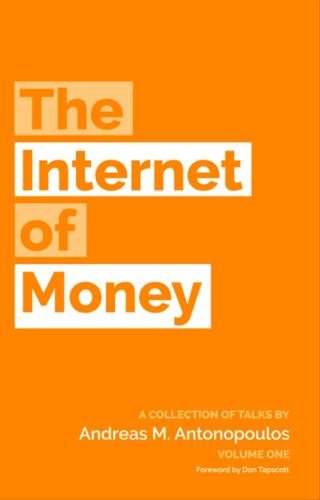
The Internet of Money
by
Andreas M. Antonopoulos
Published 28 Aug 2016
Bitcoin is a digital currency that came into existence in 2008 as an invention by a person called Satoshi Nakamoto. He published a paper where he posited that he had found the way to create a decentralized network that could achieve consensus, agreement, without any central controlling authority. Now, if you have studied computer science or distributed systems, this is known as the Byzantine Generals’ Problem. It was first described in 1982. Until 2008, it was an unsolved problem. Then, Satoshi Nakamoto said, "I have solved it." Guess what happened next? Everybody laughed, ignored him, and dismissed him.
…
Bitcoin is not a company. It is not an organization. It is a standard or a protocol just like TCP/IP, or the internet. It’s not owned by anyone. It operates by simple mathematical rules that everyone who participates in the network agrees on. Through this simple mechanism, through this invention of Satoshi Nakamoto, bitcoin is able to allow a completely decentralized network of computers to agree on what transactions have occurred on a network, essentially agreeing on who currently has the money. So, if I send money from my account to somebody else’s account in this peer-to-peer, completely decentralized network, it’s just like sending an email.

Stake Hodler Capitalism: Blockchain and DeFi
by
Amr Hazem Wahba Metwaly
Published 21 Mar 2021
A big part of what shaped me as the person I am now is when my dad passed away in 2018, which left me wondering about life's real purpose. At that point, I realized that the joy comes from the journey and the most rewarding feeling comes from helping other people. Blockchain has had its fair share of disruption in our lives since Oct. 31st , 2008, which is the date Satoshi Nakamoto the creator of bitcoin, published his paper titled "A Peer-to-Peer Electronic Cash System." Nevertheless, bitcoin has had its direct effect on my life. I started delving into blockchain in 2017 when I got the idea of researching a blockchain-related ecosystem project; that was when I fell in love with blockchain and DeFi.
…
Scott Stornetta; two researchers wanted to install a system where document timestamps are tamper-proof. However, it was not until two decades later that blockchain experienced its first real-world application' Bitcoin' was launched in January. The Bitcoin policy was designed on a blockchain. In a research paper announcing the digital currency, Bitcoin's pseudonymous founder, Satoshi Nakamoto, referred to it as "a new electronic cash system that's entirely user-to-user," with no intermediaries trusted or not. The crucial factor to comprehend here is that Blockchain's sole purpose isn't Bitcoin, to record a ledger of payments; however, in theory, blockchain can be used to make records of any number of data points rigidly.

Cloudmoney: Cash, Cards, Crypto, and the War for Our Wallets
by
Brett Scott
Published 4 Jul 2022
The crypto wildcard Perhaps, however, there are other ways to create a global matrix. One such proposal arrived in 2008, in the form of an obscure nine-page PDF document posted onto an Internet forum. The document was titled ‘Bitcoin: A Peer-to-Peer Electronic Cash System’, and it was authored by an unknown person going under the pseudonym of Satoshi Nakamoto. The paper described how a network of people could issue digital tokens and move them between each other without the involvement of banks, who preside over the normal digital money system that we use when tapping our contactless payment cards. Nakamoto and various collaborators set about building the proposed system, and by 2009 had released the first version of an open-source protocol that – when used by people – gave rise to Bitcoin, the world’s first ‘cryptocurrency’.
…
Projects like DigiCash ultimately failed, but the various component technologies pioneered by people like Chaum were to become pieces of a puzzle waiting to be brought together into something altogether more powerful, if only someone could arrange them. That someone emerged in 2008. Operating under the pseudonym of Satoshi Nakamoto, they posted a PDF document onto a cypherpunk mailing list as the world’s banking leviathans convulsed during the global financial crisis. The document was short and elegant. Like a puzzle that takes ages to complete but looks so simple once finished, it combined decades of technological innovations within one recipe.
…
It sounded utopian to some, but as always contradictions abound. It is to that troubled ‘revolution’ that we now turn. 11 A Paranormalist’s Guide to the Spectre of Bitcoin The Bitcoin White Paper is a nine-page document released onto the Internet in 2008 and authored by an unknown individual called Satoshi Nakamoto. It sketches out an elegant blueprint for how a global network of strangers can collectively co-ordinate and bring to life a system that will issue movable digital tokens. At first glance that might look like a plan for a monetary system, but it is a token system, and ‘token’ is a far more generic concept than ‘money token’.

The Code of Capital: How the Law Creates Wealth and Inequality
by
Katharina Pistor
Published 27 May 2019
Bitcoin traded at only $900 at the beginning of 2017, but was quoted at $20,000 per coin in December of the same year. Since then, the trend has been downward, and by the fall of 2018, it stood at roughly $6,000, having shed more than two-thirds of its value in dollar terms—and other cryptocurrencies did not fare much better.39 Nobody knows exactly who invented Bitcoin. Satoshi Nakamoto, the official creator, is an alias for one, or perhaps several, digital coders. Some have proposed that Nick Szabo, the brain behind smart contracts and digital property rights, is the man behind Bitcoin, but he has denied this. Another contender is Craig Wright, a professed gambler from Australia who outed himself as the person behind the pseudonym, but not everyone is convinced.40 Be this as it may, Bitcoin embodies the hope of crypto-anarchists of a state-less future, but also the fears of conventional law enforcers about losing control over the financial flows that fund illicit businesses.
…
As it happened, it never did, but it might have; and indeed, most ships do at least most of the time. There is, however, one aspect in which Bitcoin departs from these other forms of private money. Bitcoin is designed as money without credit: nobody can spend Bitcoin without proof of ownership.43 The “Bitcoin Manifesto,” published by the ominous Satoshi Nakamoto, explains that a key motivation for creating Bitcoin was to solve the “double-spending problem.”44 Yet, the ability to spend money one does not have is—for better or worse—the very essence of capitalism. Other forms of private money, the notes, bills of exchange, asset-backed securities, etc., are IOUs that are all assigned and traded with the expectation that they are convertible into state money whenever needed, and hopefully at a profit; convertibility may not be guaranteed, but the promise of convertibility makes these assets attractive and finds them buyers.
…
According to the materials collected by the FCIC, after not having had to pay collateral on a single CDS, AIGFP, the dominant player in the market, was charged by Goldman Sachs to pay US$1.8 billion from one day to the next. See http://fcic-static.law.stanford.edu/cdn_media/fcic-docs/2007-07-27_Goldman_Sachs_Collateral_Invoice_to_AIG.pdf (last accessed June 21, 2017). 20. For details, see chapter 4. 21. Nick Szabo, Secure Property Titles with Owner Authority, 1998, publications of the Satoshi Nakamoto Institute, available online at https://nakamotoinstitute.org/secure-property-titles/. 22. See Coase, Problem of Social Cost, p. 15. 23. Szabo, Secure Property. 24. Ibid., p. 3. 25. Ibid. 26. Ibid., p. 7. 27. De Soto, The Mystery of Capital, p. 179. 28. For a survey of the effects of formalizing property rights in the developing world in recent years, see Klaus Deininger, Land Policies for Growth and Poverty Reduction, World Bank Policy Research Reports (Washington, DC: World Bank, 2003). 29.
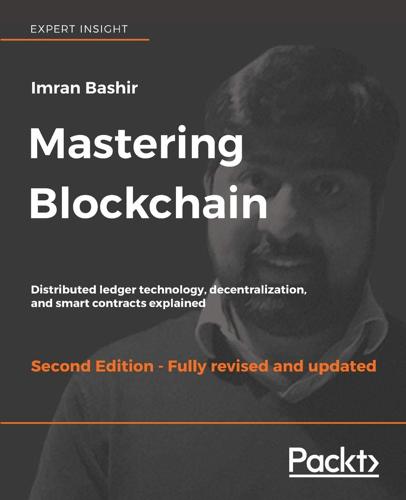
Mastering Blockchain, Second Edition
by
Imran Bashir
Published 28 Mar 2018
This concept can also be visualized with the help of the following diagram: The various ideas that supported the invention of Bitcoin and blockchain Blockchain In 2008, a groundbreaking paper entitled Bitcoin: A Peer-to-Peer Electronic Cash System was written on the topic of peer-to-peer electronic cash under the pseudonym Satoshi Nakamoto. It introduced the term chain of blocks. No one knows the actual identity of Satoshi Nakamoto. After introducing Bitcoin in 2009, he remained active in the Bitcoin developer community until 2011. He then handed over Bitcoin development to its core developers and simply disappeared. Since then, there has been no communication from him whatsoever, and his existence and identity are shrouded in mystery.
…
Bitcoin has started a revolution with the introduction of the very first fully decentralized digital currency, and the one that has proven to be extremely secure and stable from a network and protocol point of view. As a currency bitcoin is quite unstable and highly volatile, albeit valuable. We will explain this later in the chapter. This has also sparked a great interest in academic and industrial research and introduced many new research areas. Since its introduction in 2008 by Satoshi Nakamoto, Bitcoin has gained massive popularity, and it is currently the most successful digital currency in the world with billions of dollars invested in it. The current market cap, at the time of writing, for this currency is $149, 984, 293, 122. Its popularity is also evident from the high number of users and investors, increasing bitcoin price, everyday news related to Bitcoin, and the number of start-ups and companies that are offering bitcoin-based online exchanges, and it's now also traded as Bitcoin Futures on Chicago Mercantile Exchange (CME).
…
Its popularity is also evident from the high number of users and investors, increasing bitcoin price, everyday news related to Bitcoin, and the number of start-ups and companies that are offering bitcoin-based online exchanges, and it's now also traded as Bitcoin Futures on Chicago Mercantile Exchange (CME). Interested readers can read more about Bitcoin Futures at http://www.cmegroup.com/trading/bitcoin-futures.html. The name of the Bitcoin inventor Satoshi Nakamoto is believed to be a pseudonym, as the true identity of Bitcoin inventor is unknown. It is built on decades of research in the field of cryptography, digital cash, and distributed computing. In the following section, a brief history is presented in order to provide the background required to understand the foundations behind the invention of Bitcoin.
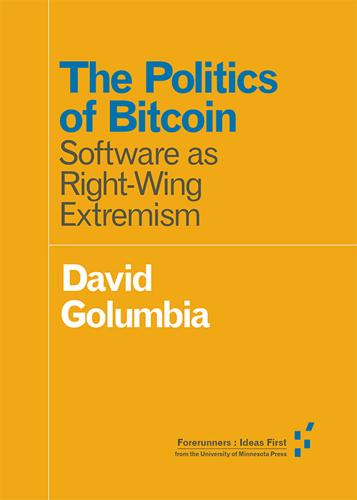
The Politics of Bitcoin: Software as Right-Wing Extremism
by
David Golumbia
Published 25 Sep 2016
Vigna and Casey 2015) have made claims like this at the same time that Bitcoin has been experiencing not just inflation but hyperinflation of exactly the sort Federal Reserve “critics” claim to fear most. The Bitcoin software has a distinct origin point, in a 2008 paper titled “Bitcoin: A Peer-to-Peer Electronic Cash System,” by a pseudonymous author who called himself “Satoshi Nakamoto.” Yet we need to reach back deeper into history to grasp Bitcoin’s complete political and intellectual contexts. Most of those involved in the development and early adoption of Bitcoin were and are part of several intersecting communities who have long put a huge amount of faith into very specific technological–political orientations toward the world, ones grounded in overtly right-wing thought, typically coupled with myopic technological utopianism.
…
New York: Guilford Press. Berlin, Isaiah. 1958. “Two Concepts of Liberty.” In Liberty, 166–217. New York: Oxford University Press, 2002. Birchall, Clare. 2006. Knowledge Goes Pop: From Conspiracy Theory to Gossip. Oxford, UK: Berg. Boase, Richard. 2013. “Cypherpunks, Bitcoin, and the Myth of Satoshi Nakamoto.” Cybersalon (September 5). http://www.cybersalon.org/. Borchgrevink, Jonas. 2014. “Ron Paul Loves His Own Ron Paul Coin and Is Positive about Bitcoin.” CryptoCoinsNews (January 16). http://www.cryptocoinsnews.com/. Brands, H. W. 2006. The Money Men: Capitalism, Democracy, and the Hundred Years’ War over the American Dollar.
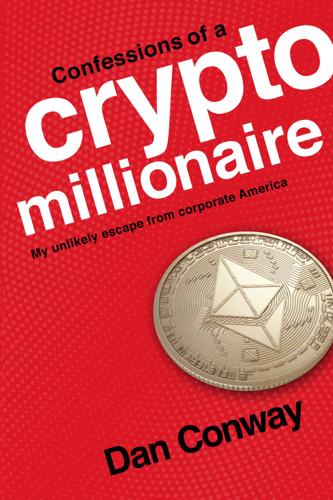
Confessions of a Crypto Millionaire: My Unlikely Escape From Corporate America
by
Dan Conway
Published 8 Sep 2019
The Hashcash and Digicash projects achieved breakthroughs but ultimately didn’t work. The two most difficult challenges were removing every single point of failure and preventing “double spends,” which could occur if the same money was sent to two different parties. In October 2008, a person or persons named Satoshi Nakamoto sent an email to the cypherpunk email list, introducing Bitcoin. He said he’d solved the digital money problem. He attached a nine-page white paper explaining how he’d done it. “In this paper, we propose a solution to the double-spending problem using a peer-to-peer distributed timestamp server to generate computational proof of the chronological order of transactions.”
…
It was inconceivable to me that he hadn’t bought and held bitcoin when it was under twenty dollars. I had assumed he had the equivalent of at least twenty to thirty million by this time, considering how early he was to the game. He was one of the smartest people in crypto, a genius at communicating the enormity of Satoshi Nakamoto’s invention and what it meant for society. He flew all over the globe, spreading the word. But he wasn’t able to hold a stash due to other financial pressures, even though only a few thousand dollars invested and held at those low prices would have been worth at least a million dollars a few years later.
…
Could solutions to problems like global warming that require broad consensus across the globe, which no single government can solve on its own, be enabled through blockchain? Yes, they could. Whether it takes years, decades, or a century for blockchain to enter its prime is not a question I’m prepared to answer. But I believe it is a good thing, an amazing thing, that Satoshi Nakamoto’s invention offers us a new tool to address some of the most important problems facing the planet. Who exactly will use blockchain, and in what way? The better question is: what is possible? If we don’t thoughtfully ask, we could end up sounding like President Rutherford Hayes in 1876, at the dawn of the telephone age, an invention that extended the reach of the modern corporation.

Whiplash: How to Survive Our Faster Future
by
Joi Ito
and
Jeff Howe
Published 6 Dec 2016
Scientists and inventors are often all too ready to claim credit for an important discovery. So it is one of our age’s more baffling mysteries that the man—or woman, or group of men and women—behind the biggest financial innovation since the ATM remains stubbornly, sincerely anonymous. It started on November 1, 2008, when someone calling himself Satoshi Nakamoto posted “Bitcoin: A Peer-to-Peer Electronic Cash System” to a cryptography mailing list.20 In his introduction, he wrote, “I’ve been working on a new electronic cash system that’s fully peer-to-peer, with no trusted third party.… The main properties: Double-spending is prevented with a peer-to-peer network.
…
The dinosaurs don’t need to be worried about other dinosaurs. They need to start thinking like, acting like, the frogs. This attitude toward risk goes a long way toward explaining how Bitcoin could come into being at all. Until 2010, when he gave Gavin Andresen the keys to the Bitcoin SourceForge project, Satoshi Nakamoto—the pseudonymous creator of the software that enabled the creation of Bitcoin—himself made nearly all of the modifications to the software. According to Andresen, former chief scientist of the Bitcoin Foundation, Satoshi’s original code still made up about 30 percent of Bitcoin Core in late 2015.11 In the same talk, Andresen noted that the core developers—the individuals with authority to accept changes to Bitcoin Core—were “cranky and risk-averse,” but not as cranky and risk-averse as Satoshi was.
…
Robertson et al., “K-Pg Extinction: Reevaluation of the Heat-Fire Hypothesis,” Journal of Geophysical Research: Biogeosciences 118, no. 1 (March 1, 2013): 329–36, doi:10.1002/jgrg.20018. 10 Bjorn Carey, “The Perils of Being Huge: Why Large Creatures Go Extinct,” Live Science, July 18, 2006, http://www.livescience.com/4162-perils-huge-large-creatures-extinct.html. 11 “MLTalks: Bitcoin Developers Gavin Andresen, Cory Fields, and Wladimir van Der Laan” (MIT Media Lab, November 17, 2015), http://www.media.mit.edu/events/2015/11/17/mltalks-bitcoin-developers-gavin-andresen-cory-fields-and-wladimir-van-der-laan. 12 The immediate justification for revoking Andresen’s commit access was a blog post he wrote stating that he believed Australian programmer Craig Wright’s claim to be Satoshi Nakamoto, and which other core developers took as evidence that Andresen had been hacked. For an overview of the controversy, see Maria Bustillos, “Craig Wright’s ‘Proof’ He Invented Bitcoin Is the ‘Canadian Girlfriend of Cryptographic Signatures’,” New York, May 3, 2016, http://nymag.com/selectall/2016/05/craig-wright-s-proof-he-invented-bitcoin-is-basically-a-canadian-girlfriend.html. 13 “2009 Exchange Rate—New Liberty Standard,” February 5, 2010, http://newlibertystandard.wikifoundry.com/page/2009+Exchange+Rate. 14 John Biggs, “Happy Bitcoin Pizza Day!

On the Edge: The Art of Risking Everything
by
Nate Silver
Published 12 Aug 2024
GO TO NOTE REFERENCE IN TEXT had inspired Nakamoto: Alan Feuer, “The Bitcoin Ideology,” The New York Times, December 14, 2013, sec. Sunday Review, nytimes.com/2013/12/15/sunday-review/the-bitcoin-ideology.html. GO TO NOTE REFERENCE IN TEXT “with conventional currency”: Satoshi Nakamoto, “Bitcoin Open Source Implementation of P2P Currency,” Satoshi Nakamoto Institute, February 11, 2009, satoshi.nakamotoinstitute.org/posts/p2pfoundation/1/#selection-45. GO TO NOTE REFERENCE IN TEXT digital ledger of every transaction: Antony Lewis, The Basics of Bitcoins and Blockchains: An Introduction to Cryptocurrencies and the Technology that Powers Them, Kindle ed.
…
“Generally, I don’t think WallStreetBets is skilled,” Li said. “The posts you see of the success stories—it’s one in a million. It doesn’t show the 999,000 people that lost their money and never played again—or are like me.” Bitcoin Is from Mars, Ethereum Is from Venus The Genesis Block was created by a person going by the name Satoshi Nakamoto on January 3, 2009. It awarded 50 bitcoin (BTC) to the address 1A1zP1eP5QGefi2DMPTfTL5SLmv7DivfNa, creating the first Bitcoins in history. It also came with a message written in hexadecimal: The Times 03/Jan/2009 Chancellor on brink of second bailout for banks This was a reference to a headline that day in The Times of London.
…
*5 I don’t mean to imply that I didn’t have any fun; I later went to another party on the opulent Star Island as a guest of a guest of the poker player Phil Hellmuth where the singer Jewel was performing—that scene was a lot more chill. *6 Investopedia defines this term well: “Shitcoin refers to a cryptocurrency with little to no value or no immediate, discernible purpose.” *7 Satoshi after Satoshi Nakamoto, the founder of Bitcoin, and Pepe after Rare Pepe, an early NFT project. *8 GPU stands for “graphics processing unit”—a type of computer chip that was originally optimized to display video game graphics, but which is also highly efficient for general mathematical computations. Thus, GPUs are often used for other computationally intensive problems, such as training AI models
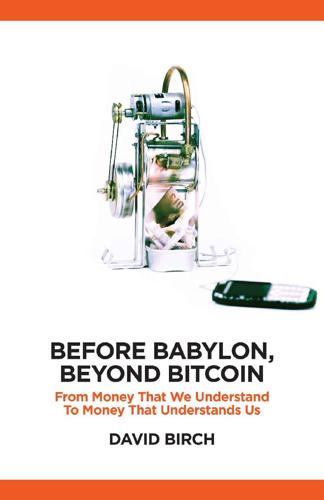
Before Babylon, Beyond Bitcoin: From Money That We Understand to Money That Understands Us (Perspectives)
by
David Birch
Published 14 Jun 2017
Many organizations beyond central banks and commercial banks might then wish to create private money. This could be as a means of supplying credit, as envisaged by the Nobel-winning economist Friedrich Hayek in 1970s, or it could be a means of encouraging customer loyalty, as explored by lateral thinker Edward de Bono in the 1990s. There might also be idealistic reasons, as explored by ‘Satoshi Nakamoto’, the mysterious inventor of the cryptographic asset Bitcoin (Vigna and Casey 2015), and others since 2008. I will explore all these possibilities in my ‘5Cs’ of money creation (central banks, commercial banks, companies, communities and cryptography) in more detail later in this book, before settling on a narrative for the ‘next money’ that is likely to surprise you
…
It is time for the debate on redesign that Christine Desan called for. Chapter 13 Counting on cryptography A purely peer-to-peer version of electronic cash would allow online payments to be sent directly from one party to another without going through a financial institution. — ‘Satoshi Nakamoto’ (2008) Having said earlier that the iconic technology of money is the plastic card, right now the iconic money of the future seems to be cryptocurrency. Spurred on by the widespread interest in Bitcoin, there are many people looking at the concept and wondering whether cryptocurrency – money that depends on cryptography rather than the belief of a community – might be a feature in the emerging money landscape.
…
Bitcoin is a decentralized, peer-to-peer means of exchange. If you have a Bitcoin, which is just a string of numbers, you can send that Bitcoin (or a subdivision of it) to anyone else. (If you want to understand how Bitcoin works, a good place to start is the original paper on the topic: ‘Bitcoin: a peer-to-peer electronic cash system’ by ‘Satoshi Nakamoto’.) I’m no expert on cryptography but there’s no reason I know of to question the basic idea: use a computationally difficult challenge to create strings of bits that it’s hard to make but easy to copy, then use digital signatures for transactions. I get my Bitcoin (a string of bits) and then to transfer them to you I add a digital signature and send them to you.

Bit by Bit: How P2P Is Freeing the World
by
Jeffrey Tucker
Published 7 Jan 2015
Consider the criticism of goldbugs, who have, for decades, pushed the idea that sound money must be backed by something real, hard, and independently valuable. Bitcoin doesn’t qualify as sound money, right? Maybe it does. Let’s take a closer look. Bitcoin first emerged as a possible competitor to national, government-managed money nearly six years ago. Satoshi Nakamoto’s white paper was released October 31, 2008. The structure and language of this paper sent the message: This currency is for computer technicians, not economists nor political pundits. The paper's circulation was limited; novices who read it were mystified. But the lack of interest didn’t stop history from moving forward.
…
Looking back at those days, it seems obvious now that this was a turning point in history, a time in which it became very clear to some very smart people in the world that the U.S. government’s system of financial and monetary management was broken. If an entire system could be brought down by declining house prices, is it really robust enough to support global economic growth too much further into the future? Enter the faceless programmer, Satoshi Nakamoto. Around the same time as the housing crash, he was putting the finishing touches on his newly proposed currency network, bitcoin. It would be created entirely out of code. It would have all the main features that we know good money has. It would be divisible, portable, durable, uniform in quality, and scarce.

AI 2041: Ten Visions for Our Future
by
Kai-Fu Lee
and
Qiufan Chen
Published 13 Sep 2021
Dick reference: “Hal” didn’t refer to the killing machine HAL 9000 in 2001: A Space Odyssey, but to the earliest implementation of the reusable proofs of work (RPOW) system, and the man who received the first Bitcoin transfer from Satoshi Nakamoto’s wallet. The legendary Hal Finney had died in 2014 of ALS, having opted for liquid nitrogen cryopreservation in the hope of eventual resurrection. Wallet addresses linked to Satoshi Nakamoto had been discovered many times, but there had never been much cash in them. The big fish had never shown its face. Perhaps tonight, in this broken boat at the end of the world, the leviathan would finally surface
…
“My conservative estimate is no less than two hundred and sixty billion U.S., maybe five hundred billion, depending on which trading strategy we go with.” “Don’t let the money fuck with your heads.” The stud in Robin’s lip quivered as she spoke. “Fortune and glory, bros, fortune and glory.” * * * — LORE IN THE HACKER underworld had it that Satoshi Nakamoto, the mysterious father of Bitcoin, had died in a Guantánamo cell two decades earlier. He’d left behind no less than a million bitcoins, mined in his early years. The currency was supposedly hidden in a digital wallet that relied on a script pattern known as a P2PK—or pay to public key. If the rumors were true, the treasure was a golden opportunity for prospectors.
…
First, many of the wallet owners have lost their private key, because the keys were too long to be remembered, and people didn’t care as much when bitcoins were not that valuable a decade ago. Second, these bitcoin owners were unaware of this vulnerability. Third, about half of the two million belongs to the legendary Satoshi Nakamoto, the mysterious inventor of Bitcoin, who seems to have vanished. Thus, this story is referring to “Satoshi’s treasure.” Why were all the transactions published on a public ledger? Because this was designed to keep bitcoins safe from any one company or individual. This public ledger is stored in a decentralized way on many computers, which makes it impossible for any one computer to modify or forge it.
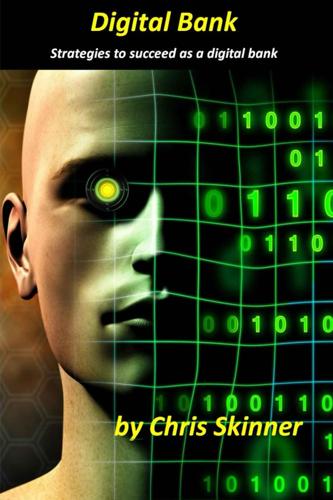
Digital Bank: Strategies for Launching or Becoming a Digital Bank
by
Chris Skinner
Published 27 Aug 2013
Instead of a central bank issuing the currency, Bitcoins are issued by anyone with a computer or smartphone, and are issued using encryption algorithms. In other words, extremely difficult mathematical problems are incorporated into each coin and transactions are cryptographically authenticated. This makes Bitcoins a combination of a commodity and a fiat currency, with the creation of Bitcoin dating back to 2008 when Satoshi Nakamoto published a white paper about a peer-to-peer exchange of value for the internet age. [28] The coins are digital currency designed to be controlled through encryption, rather than a centralised authority, and potentially operate in exactly the same way as cash. Bitcoins are fully exchangeable as an anonymous form of currency in real-time across the internet and Point-of-Sale, with core features that they can be: Sent to anyone with a Bitcoin address; Accessed from anywhere with an Internet connection; Anybody can start buying, selling or accepting Bitcoins regardless of their location; Completely distributed with no bank or payment processor between users (this decentralization is the basis for Bitcoin’s security and freedom); and Transactions are free (for now, this will change).
…
The reason why Bitcoins are viewed as dangerous by governments is for exactly the reasons cited earlier – they cannot be controlled – and there will be a long and arduous battle between controllers and the uncontrolled. This is the nature of the Wikiconomy. Nevertheless, I have invested in Bitcoins and suggest you do too, as it is very likely that they will be a major store of value for years to come in the near term. Bitcoin’s timeline[29] 2008–2009 In 2008, Satoshi Nakamoto posted a paper describing the Bitcoin protocol on the internet. In 2009, the Bitcoin network came into existence with the release of the first open source Bitcoin client and the issuance of the first Bitcoins. 2010 The prices for the first Bitcoin transactions were negotiated by individuals on the Bitcointalk forums.
…
They may be shipping under $35 goods or services, or shipping a digital service rather than physical goods, and these firms may find that Bitcoin, relying solely on code and mathematics, is the only currency they could use. It’s a bit technical however, isn’t it? That’s the biggest barrier to Bitcoin. It’s not end-user friendly. Every client is working off the first codebase. Satoshi Nakamoto solved the last logic problem to create a decentralized currency. He’s an academic, incredibly smart, but not a computer engineer. The code was not written in the most efficient way therefore, but every client today has built off this code. Now, for the first time, we are rewriting the code from the ground up to be more efficient and effective.

You've Been Played: How Corporations, Governments, and Schools Use Games to Control Us All
by
Adrian Hon
Published 14 Sep 2022
David Pogue, “6 Billion Degrees of Separation,” Pogue’s Posts, New York Times, January 22, 2007, https://pogue.blogs.nytimes.com/2007/01/22/6-billion-degrees-of-separation/; “Find Satoshi,” Find Satoshi, accessed November 28, 2021, https://findsatoshi.com. 26. “Satoshi Nakamoto,” Wikipedia, updated November 28, 2021, https://en.wikipedia.org/wiki/Satoshi_Nakamoto. 27. u/th0may, “Found someone similar looking on a Japanese webpage,” r/FindSatoshi, Reddit, December 26, 2020, www.reddit.com/r/FindSatoshi/comments/kktjhc/found_someone_similar_looking_on_japanese_webpage. 28. “Cicada 3301,” Wikipedia, updated November 8, 2021, https://en.wikipedia.org/wiki/Cicada_3301. 29.
…
Every so often, the internet rediscovered the puzzle amid a flurry of YouTube videos and podcasts; I could tell whenever this happened because people started messaging me on Twitter and Instagram demanding clues. One obvious clue in the puzzle was the man’s name: Satoshi. It is not a rare name, and it happens to be the same as that of the presumed pseudonymous person or persons who developed Bitcoin, Satoshi Nakamoto.26 So, of course, some people thought Perplex City’s Satoshi created Bitcoin. Not many, but enough that I received messages about it every week—until December 2020, when Tom-Lucas Säger from Hamburg used the PimEyes AI facial recognition search engine to discover a 2018 photo of Satoshi holding a large mug of beer.27 All in all, it was quite sweet and innocent.

The Future Is Faster Than You Think: How Converging Technologies Are Transforming Business, Industries, and Our Lives
by
Peter H. Diamandis
and
Steven Kotler
Published 28 Jan 2020
For more background on Brett Hagler’s company, New Story, see: Adele Peters, “There Will Soon Be a Whole Community of Ultra-Low-Cost 3-D-Printed Homes,” Fast Company, March 11, 2019, https://www.fastcompany.com/90317441/there-will-soon-be-a-whole-community-made-of-these-ultra-low-cost-3-D-printed-homes. In the fall of 2019, in Mexico: Ibid. Blockchain were first proposed in 1983: David Chaum, “Blind Signatures for Untraceable Payments,” Advances in Cryptography (Springer 1998), pp. 199–203 See: http://blog.koehntopp.de/uploads/Chaum.BlindSigForPayment.1982.PDF. Satoshi Nakamoto: Satoshi Nakamotoe, “Bitcoin: A Peer-to-Peer Electronic Cash System.” See: https://bitcoin.org/bitcoin.pdf. In 2010, Laszlo Hanyecz solved that problem: Nick Bilton, “Disruptions: Betting on a Coin with no Realm,” New York Times, December 22, 2013. By 2019, they were just shy of $15,000: Data retreived from: https://coinmarketcap.com/currencies/bitcoin/
…
When you send an email, your computer stores the original and sends a copy. This is fine for exchanging letters, but it’s lousy for trading money. This is the double-spending problem and it’s exactly what bitcoin was designed to solve. Bitcoin appeared in 2008, when an online paper authored by a still-anonymous person (or persons) calling themselves Satoshi Nakamoto proposed a digital peer-to-peer payment system that allows cash to be exchanged without the need for a financial institution. The following year, the first bitcoin software was made public, yet because the coins had only been mined but not traded, there was no way to assign them monetary value.

Orwell Versus the Terrorists: A Digital Short
by
Jamie Bartlett
Published 12 Feb 2015
An alternative way of organising the internet is being built as we speak, an internet where no one is in control, where no one can find you or shut you down, where no one can manipulate your content. A decentralised world that is both private and impossible to censor. Back in 2009, in an obscure cryptography chat forum, a mysterious man called Satoshi Nakamoto invented the crypto-currency Bitcoin.fn3 It turns out the real genius of Bitcoin was not the currency at all, but the way that it works. Bitcoin creates an immutable, unchangeable public copy of every transaction ever made by its users, which is hosted and verified by every computer that downloads the software.

The Economic Singularity: Artificial Intelligence and the Death of Capitalism
by
Calum Chace
Published 17 Jul 2016
Its most famous application is Bitcoin, the world’s first completely decentralized digital currency.[cccxlix] In just a few years, the Bitcoin “economy” has grown larger than the economies of some countries. The value of a Bitcoin has fluctuated wildly, hitting a peak of $1,216 in November 2013. The insights which made Bitcoin possible were published in 2008 under the pseudonym Satoshi Nakamoto, and the blockchain is at the heart of it. The blockchain is a public ledger which records transactions. The clever bit is that the ledger is completely trustworthy despite having no central authority, like a bank, to validate it. It is trustworthy in that you can have full confidence that if someone gives you a Bitcoin, then you do own that Bitcoin: the person who gave it to you will not be nipping off to spend the same piece of currency elsewhere, even though it is entirely digital.
…
The new block is added to the chain, and incorporates the transactions made since the last block was added to the chain. Your transaction is published on the blockchain’s network as soon as it is agreed, but it is only confirmed, and hence reliable, when a miner has incorporated it into a block. Satoshi Nakamoto’s innovation solved a previously intractable challenge in computer science known as the Byzantine General’s Problem. Imagine a mediaeval city surrounded by a dozen armies, each led by a powerful general. If the armies mount a co-ordinated attack, their victory is assured, but they can only communicate by messengers on horseback who visit the generals one by one, and some of the generals are untrustworthy.
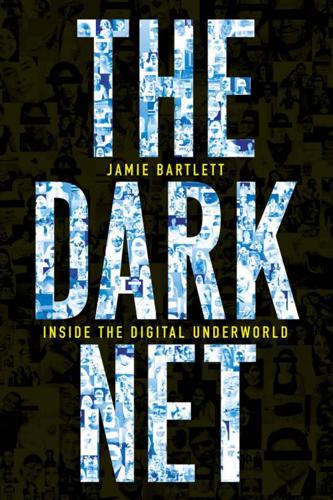
The Dark Net
by
Jamie Bartlett
Published 20 Aug 2014
The most notable was the cryptography mailing list hosted by Perry Metzger, where many of the original cypherpunks migrated. But it also attracted a new generation who were just as keen to post papers and ideas about how to evade government surveillance and improve individual privacy online. In early 2008 a mysterious contributor to the cryptography mailing list called Satoshi Nakamoto posted a message that would change everything. To Calafou Six weeks after Amir’s talk, I find myself walking down a dusty hill and over a concrete bridge towards an enormous nineteenth-century textile factory complex. The words ‘Calafou: còlonia ecoindustrial postcapitalista’ are painted in large black and green letters on a wall outside.
…
p.157 ‘However, researchers have found that . . .’ http://motherboard.vice.com/blog/bitcoin-isnt-the-criminal-safe-haven-people-think-it-is; http://anonymity-in-bitcoin.blogspot.com/2011/07/bitcoin-is-not-anonymous.html. p.157 ‘CoinJoin, for example, works . . .’ https://bitcointalk.org/index.php? topic=139581.0. p.158 ‘The future of these markets . . .’ http://www.chaum.com/articles/Security_Wthout_Identification.htm. This was what David Chaum – the inventor of digital cash twenty years before Satoshi Nakamoto – had in mind all along. In his 1985 book, Security without Identification: Transaction Systems to Make Big Brother Obsolete, he set out systems that could combine anonymity with secure payment. p.159 ‘Dark net markets have introduced . . .’ Hirschman, A., Exit Voice and Loyalty. p.160 ‘When Professor Nicolas Christin analysed . . .’ http://www.andrew.cmu.edu/user/nicolasc/publications/TR-CMU-CyLab-12-018.pdf.
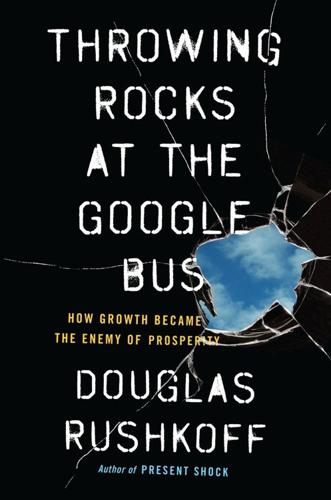
Throwing Rocks at the Google Bus: How Growth Became the Enemy of Prosperity
by
Douglas Rushkoff
Published 1 Mar 2016
Could a money system look and act less like iTunes and more like BitTorrent, where, instead of depending on a platform monopoly to negotiate everything, all the participants use protocols to interact with one another directly? Could a digital money system achieve with openness what traditional banks do with secrecy? The only way to find out is to start as openly as possible. That’s why Bitcoin first appeared as the subject of a 2008 white paper authored by someone (or multiple someones) going under the name Satoshi Nakamoto. The paper outlined a concept for a virtual currency created and traded on a peer-to-peer, open-source platform. It would need no central authority to issue it, nor any central middleman to verify or administer its transactions. The network platform would be called Bitcoin, and its currency would be called bitcoins.27 This idea was not entirely new.
…
David Wessel, “Lousy Economic Growth Is a Choice, Not an Inevitability,” brookings.edu, October 13, 2014. 24. Bernard Lietaer and Jacqui Dunne, Rethinking Money: How New Currencies Turn Scarcity into Prosperity (San Francisco: Berrett-Koehler Publishers, 2013). 25. Joanna Glasner, “PayPal’s IPO Woes Continue,” Wired, February 12, 2002. 26. In most of the world, that would be SWIFT. 27. Satoshi Nakamoto, “Bitcoin: A Peer-to-Peer Electronic Cash System,” bitcoin.org, October 31, 2008. 28. Ibid. 29. Pedro Franco, Understanding Bitcoin: Cryptography, Engineering and Economics (New York: John Wiley & Sons, 2014). 30. Ibid. 31. Andreas M. Antonopoulos, Mastering Bitcoin: Unlocking Digital Cryptocurrencies (Sebastopol, Calif.: O’Reilly Media, 2014). 32.
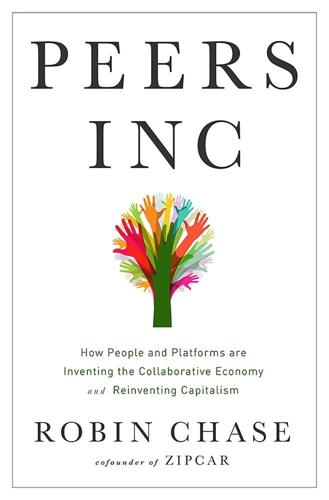
Peers Inc: How People and Platforms Are Inventing the Collaborative Economy and Reinventing Capitalism
by
Robin Chase
Published 14 May 2015
Right now there is an explosion of ideas, innovation, invention, and excitement as a result of the Bitcoin experiment. People are applying the principles, code, and experience to arenas well beyond just currency, trying to solve many of the challenges raised in the second half of this book. Let’s start with a very brief background on Bitcoin. In 2008, Satoshi Nakamoto wrote a paper about a digital currency, called Bitcoin. “Satoshi Nakamoto” is a pseudonym, and no one knows whether it refers to a real person or a group of people. In 2009 their ideas were released as open-source software. (Note that this is yet another example where the concept and organizing principle of the platform were simply gifted out of thin air; that’s not a replicable strategy.)

Everything for Everyone: The Radical Tradition That Is Shaping the Next Economy
by
Nathan Schneider
Published 10 Sep 2018
Like a used-up gold mine, the machine lent even the Bitcoin Center’s busiest evenings the sensation of a ghost town. Bitcoin was supposed to usher in a new global economy—gold for the internet age—and mining it was supposed to be an act of democracy. On February 11, 2009, Bitcoin’s pseudonymous creator, Satoshi Nakamoto, announced his invention in an online forum by explaining, “The root problem with conventional currency is all the trust that’s required to make it work.”4 This was just as the financial giants were breaching the world’s trust. At the time, only a month after Bitcoin’s initial “genesis block” went online, users could mine with an ordinary computer, though doing so was technically difficult and barely lucrative.
…
See Nathan Schneider, “How a Worker-Owned Tech Startup Found Investors—and Kept Its Values,” YES! Magazine (April 26, 2016). 3. Credit Union National Association, “Credit Union Data and Statistics,” cuna.org/Research-And-Strategy/Credit-Union-Data-And-Statistics; CoBank, “About CoBank,” cobank.com/About-CoBank.aspx. 4. Satoshi Nakamoto, “Bitcoin Open Source Implementation of P2P Currency,” P2P Foundation Ning forum (February 11, 2009), p2pfoundation.ning.com/forum/topics/bitcoin-open-source; see also the original Bitcoin white paper at bitcoin.org/bitcoin.pdf; for a fuller account of the rise of Bitcoin, see Nathaniel Popper, Digital Gold: Bitcoin and the Inside Story of the Misfits and Millionaires Trying to Reinvent Money (Harper, 2015). 5.

Practical Doomsday: A User's Guide to the End of the World
by
Michal Zalewski
Published 11 Jan 2022
Although the mechanics of various cryptocurrencies differ in important ways, the example of Bitcoin is instructive. It’s a global, decentralized currency with no recoverable intrinsic value, no central authority to issue the money or set exchange rates, and no other mechanism anchoring it to the physical world. Until the publication of a technical paper by a mysterious person going by the pseudonym of Satoshi Nakamoto,7 such a juxtaposition of properties would seem nonsensical, and as such, it escaped any serious debate. But with his invention, Nakamoto apparently accomplished the unthinkable—and did so by employing several clever computer tricks. First, his design allowed anyone to create new (virtual) coins in the privacy of their homes, but only by solving computational puzzles that would get more difficult as time went by.
…
Lewis, “The Economic History of the Fur Trade: 1670 to 1870,” Economic History Association, March 16, 2008, https://eh.net/encyclopedia/the-economic-history-of-the-fur-trade-1670-to-1870/. 6. Sandra E. Gleason, “Hustling: The ‘Inside’ Economy of a Prison,” Federal Probation 42, no. 2 (June 1978): 32–40, https://www.ojp.gov/pdffiles1/Digitization/50862NCJRS.pdf. 7. Satoshi Nakamoto, “Bitcoin: A Peer-to-Peer Electronic Cash System,” Bitcoin.org (2008), https://bitcoin.org/bitcoin.pdf. 8. “Failed Bank List,” Federal Deposit Insurance Corporation, https://www.fdic.gov/resources/resolutions/bank-failures/failed-bank-list/. 9. Drew Desilver, “Financial Crises Surprisingly Common, but Few Countries Close Their Banks,” Pew Research Center, July 9, 2015, https://www.pewresearch.org/fact-tank/2015/07/09/financial-crises-surprisingly-common-but-few-countries-close-their-banks/. 10.

The Cosmopolites: The Coming of the Global Citizen
by
Atossa Araxia Abrahamian
Published 14 Jul 2015
“It didn’t turn out so well for the real Jesus,” Ver said as he sounded off against the “tyrants.” “He was murdered by his government. I hope that doesn’t happen to me.” Bitcoin is a decentralized digital payment system that is entirely independent of, and unregulated by, banks. Created in 2009 by someone using the pseudonym Satoshi Nakamoto, Bitcoins are “mined” by computers that take records of previous transactions. The computers turn the records into code and add them to a “blockchain,” or a constantly evolving ledger that’s stored on every Bitcoin-holder’s computer. That means that goods can be bought anonymously, without the transactions ever getting traced back to either the buyer or the seller.
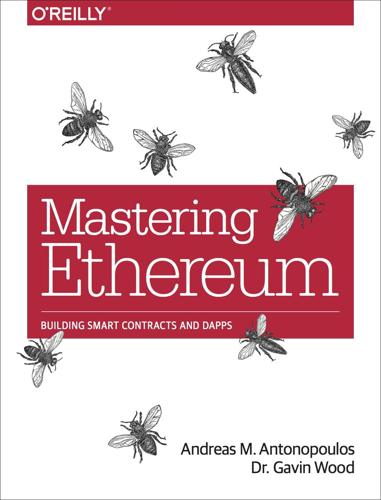
Mastering Ethereum: Building Smart Contracts and DApps
by
Andreas M. Antonopoulos
and
Gavin Wood Ph. D.
Published 23 Dec 2018
Reward An amount of ether included in each new block as a reward by the network to the miner who found the proof-of-work solution. RLP Recursive Length Prefix. An encoding standard designed by the Ethereum developers to encode and serialize objects (data structures) of arbitrary complexity and length. Satoshi Nakamoto The name used by the person or people who designed Bitcoin, created its original reference implementation, and were the first to solve the double-spend problem for digital currency. Their real identity remains unknown. Secret key (aka private key) The secret number that allows Ethereum users to prove ownership of an account or contracts, by producing a digital signature (see “public key,” “address,” “ECDSA”).
…
Remote Procedure Call (RPC) commands (see JSON-RPC API) request-response oracles, Oracle Design Patterns require function, Error Handling (assert, require, revert) resolver contracts, Resolvers revert function, Error Handling (assert, require, revert) reward, defined, Quick Glossary RLP (Recursive Length Prefix), Quick Glossary, The Structure of a Transaction root seeds, creating HD wallets from, Creating an HD Wallet from the Seed Ropsten Test Network, Getting Some Test Ether RPC (Remote Procedure Call) commands (see JSON-RPC API) Rubixi pyramid scheme, Real-World Example: Rubixi runtime bytecode, Contract Deployment Code Rust, Software Requirements for Building and Running a Client (Node) S SafeMath library, Preventative Techniques salts, From mnemonic to seed Satoshi Nakamoto, Quick Glossary SchellingCoin protocol, Decentralized Oracles Schneier, Bruce, Cryptographic Hash Functions SECG (Standards for Efficient Cryptography Group), Generating a Public Key secp256k1 elliptic curve, Elliptic Curve Cryptography Explained-Elliptic Curve Cryptography Explained, Generating a Public Key, Elliptic Curve Libraries secret keys, Quick Glossary(see also private keys) Secure Hash Algorithm (see SHA entries) security (smart contracts), Smart Contract Security-Conclusionsarithmetic over/underflow threat, Arithmetic Over/Underflows-Real-World Examples: PoWHC and Batch Transfer Overflow (CVE-2018–10299) best practices, Security Best Practices block timestamp manipulation threat, Block Timestamp Manipulation-Real-World Example: GovernMental constructors and contract name-change threat, Constructors with Care contract libraries for, Contract Libraries default visibility specifier threat, Default Visibilities-Real-World Example: Parity Multisig Wallet (First Hack) DELEGATECALL opcode threat, DELEGATECALL-Real-World Example: Parity Multisig Wallet (Second Hack) denial of service attacks, Denial of Service (DoS)-Real-World Examples: GovernMental entropy illusion threat, Entropy Illusion external contract referencing threat, External Contract Referencing-Real-World Example: Reentrancy Honey Pot floating-point problem, Floating Point and Precision-Real-World Example: Ethstick race conditions/front running threat, Race Conditions/Front Running-Real-World Examples: ERC20 and Bancor reentrancy attacks, Reentrancy-Real-World Example: The DAO risks and antipatterns, Security Risks and Antipatterns-Preventative Techniques short address/parameter attack, Short Address/Parameter Attack token standard implementation choices, Security by Maturity tx.origin authentication threat, Tx.Origin Authentication-Preventative Techniques unchecked CALL return value threat, Unchecked CALL Return Values-Real-World Example: Etherpot and King of the Ether unexpected ether threat, Unexpected Ether-Further Examples uninitialized storage pointer threat, Uninitialized Storage Pointers-Real-World Examples: OpenAddressLottery and CryptoRoulette Honey Pots seeded wallets (see deterministic wallets) seeds, Quick Glossary(see also root seeds) deriving from mnemonic code words, From mnemonic to seed mnemonic code words for, Wallet Technology Overview, Seeds and Mnemonic Codes (BIP-39)(see also mnemonic code words) optional passphrase with, Optional passphrase in BIP-39 selfdestruct function, Contract Constructor and selfdestruct, The Vulnerability SELFDESTRUCT opcode, Life Cycle of a Smart Contract, Contract Constructor and selfdestruct semantic versioning, Selecting a Version of Solidity Serenity, Quick Glossary, Ethereum’s Four Stages of Development Serpent, Quick Glossary, Introduction to Ethereum High-Level Languages SGX (Software Guard eXtensions), Data Authentication SHA (Secure Hash Algorithm), Quick Glossary SHA-3 Hash Function, Ethereum’s Cryptographic Hash Function: Keccak-256 shell commands, Software Requirements for Building and Running a Client (Node) short address/parameter attack, Short Address/Parameter Attackpreventative techniques, Preventative Techniques vulnerability, The Vulnerability side effects, Introduction to Ethereum High-Level Languages single-instance private blockchain, Local Blockchain Simulation Advantages and Disadvantages singleton, Quick Glossary smart contracts, Smart Contracts and Solidity-ConclusionsABI, The Ethereum Contract ABI-Selecting a Solidity Compiler and Language Version addressing an existing instance, Addressing an existing instance and Ethereum high-level languages, Introduction to Ethereum High-Level Languages-Introduction to Ethereum High-Level Languages as DApp backend, Backend (Smart Contract), Auction DApp: Backend Smart Contracts-DApp governance basics, Externally Owned Accounts (EOAs) and Contracts building with Solidity, Building a Smart Contract with Solidity-Conclusions call method, Raw call, delegatecall-Raw call, delegatecall calling other contracts from within a contract, Calling Other Contracts (send, call, callcode, delegatecall)-Raw call, delegatecall constructor function, Contract Constructor and selfdestruct creating new instance, Creating a new instance defined, Quick Glossary, Quick Glossary, What Is a Smart Contract?
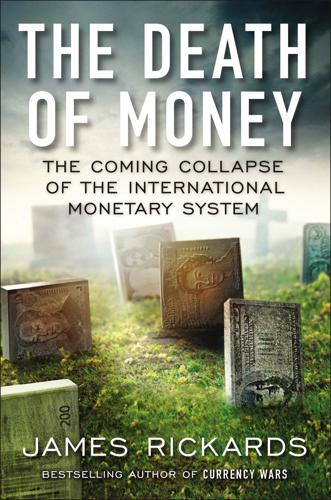
The Death of Money: The Coming Collapse of the International Monetary System
by
James Rickards
Published 7 Apr 2014
Among them are the rise of alternative currencies and of virtual or digital currencies such as bitcoin. Digital currencies exist within private peer-to-peer computer networks and are not issued by or supported by any government or central bank. The bitcoin phenomenon began in 2008 with the pseudonymous publication of a paper (by Satoshi Nakamoto) describing the protocols for the creation of a new electronic digital currency. In January 2009 the first bitcoins were created by Nakamoto’s software. He continued making technical contributions to the bitcoin project until 2010, at which point he withdrew from active participation. However, by that time a large community of developers, libertarians, and entrepreneurs had taken up the project.
…
. : “The Rolling Student Loan Bailout,” Wall Street Journal, August 9, 2013, http://online.wsj.com/article/SB10001424127887323968704578652291680883634.html. “the test of a first-rate intelligence . . .”: F. Scott Fitzgerald, The Crack-Up (1936; reprint New York: New Directions, 2009). The bitcoin phenomenon began in 2008 . . . : Satoshi Nakamoto, “Bitcoin: A Peer-to-Peer Electronic Cash System,” November 1, 2008, http://bitcoin.org/bitcoin.pdf. the history of barter is mostly a myth: David Graeber, Debt: The First 5,000 Years (Brooklyn, N.Y.: Melville House, 2011), pp. 21–41. “Sept. 11 was not a failure of intelligence or coordination . . .”: Thomas L.

The People vs Tech: How the Internet Is Killing Democracy (And How We Save It)
by
Jamie Bartlett
Published 4 Apr 2018
Before bitcoin, crypto-anarchists had for years been dreaming of decentralised anonymous payment systems. The cypherpunk email list discussed it frequently. When the list wound down at around the turn of the millennium, one of the members, Perry Metzger, set up a new cryptography forum to carry on these discussions. In late 2008, someone called Satoshi Nakamoto (in keeping with the crypto-anarchists’ love of anonymity, to date no one knows who he is) first posted his idea for bitcoin. Nakamoto distrusted the global banking system, and imagined bitcoin as a way to undermine it. He hated that bankers and governments held the key to the money supply and could manipulate it to their own ends.

Coders: The Making of a New Tribe and the Remaking of the World
by
Clive Thompson
Published 26 Mar 2019
The breakthrough search algorithm that led to Google was a product of two students, Larry Page and Sergey Brin; YouTube was a trio of coworkers; Snapchat a trio (or, the level of the code, one person, Bobby Murphy). BitTorrent was entirely a creation of Bram Cohen, and Bitcoin was reputedly the work of a lone coder, the pseudonymous “Satoshi Nakamoto.” John Carmack created the 3-D-graphics engines that helped usher in the multi-billion-dollar industry of first-person shooter video games. The reason so few people can have such an outsize impact, Andreessen argues, is that when you’re creating a weird new prototype of an app, the mental castle building is most efficiently done inside one or two isolated brains.
…
one person, Bobby Murphy: Alex Hern, “Snapchat Boss Evan Spiegel on the App That Made Him One of the World’s Youngest Billionaires,” Guardian, December 5, 2017, https://www.theguardian.com/technology/2017/dec/05/snapchat-boss-evan-spiegel-on-the-app-that-made-him-one-of-the-worlds-youngest-billionaires. the pseudonymous “Satoshi Nakamoto”: Joshua Davis, “The Crypto-Currency,” New Yorker, October 10, 2011, accessed August 18, 2018, https://www.newyorker.com/magazine/2011/10/10/the-crypto-currency. first-person shooter video games: Chris Kohler, “Q&A: Doom’s Creator Looks Back on 20 Years of Demonic Mayhem,” Wired, December 10, 2013, accessed August 18, 2018, https://www.wired.com/2013/12/john-carmack-doom.

Blockchain Chicken Farm: And Other Stories of Tech in China's Countryside
by
Xiaowei Wang
Published 12 Oct 2020
Since the blocks are all mathematically chained together, to falsify a record would mean having to redo all the work for subsequent blocks on the chain, requiring so much electricity and resources that falsification is disincentivized. Bitcoin arrived in 2008, at the beginning of a global financial crisis. At the time, a paper was circulated online, written by someone named Satoshi Nakamoto, proposing a peer-to-peer currency. The paper outlined this peer-to-peer currency, or Bitcoin, as Nakamoto called it. Instead of a central bank verifying transactions and preventing double spending, Nakamoto proposed the system of blockchain to verify and keep records of transactions. Bitcoin would be the incentive for people with computers to verify and put blocks on the blockchain.
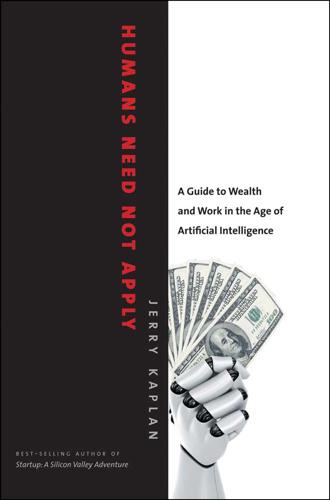
Humans Need Not Apply: A Guide to Wealth and Work in the Age of Artificial Intelligence
by
Jerry Kaplan
Published 3 Aug 2015
They will offer us the minimum required to keep us satisfied while pocketing the excess profits, just as any smart businessperson does. The first glimmers of this are already visible. Bitcoins, for instance. It’s a new currency that exists solely in cyberspace and isn’t controlled by anyone. It was invented by an anonymous person or entity named Satoshi Nakamoto. No one may know who—or what—he is, but it’s clear that he doesn’t control the production, management, or value of his creation. Despite halfhearted attempts to regulate or legitimize bitcoins, neither do governments. Or anyone else, for that matter. As long as they can be converted to and from other assets of value—whether legally or illegally anywhere in the world—bitcoins will continue to exist and find adherents.

Blockchain Basics: A Non-Technical Introduction in 25 Steps
by
Daniel Drescher
Published 16 Mar 2017
The Usage of the Term in This Book Throughout the rest of this book, blockchain refers to the shortcut for the umbrella term for purely distributed peer-to-peer systems of ledgers that utilize the blockchain-technology-suite. If any other meaning is intended, I will indicate this by explicitly using the term blockchain-data-structure, blockchain-algorithm, or blockchain-technology-suite. ■ Note The technology that is nowadays regarded as blockchain was proposed in 2008 under the pseudonym Satoshi Nakamoto,1 whose true identity has not yet been revealed. Provisional Definition The following definition is not complete. It still lacks important details that have not yet been presented. However, this definition serves as an intermedi- ate step toward a more complete understanding of the term: The blockchain is a purely distributed peer-to-peer system of ledgers that utilizes a software unit that consist of an algorithm, which negotiates the informational content of ordered and connected blocks of data together with cryptographic and security technologies in order to achieve and maintain its integrity.

The Price of Time: The Real Story of Interest
by
Edward Chancellor
Published 15 Aug 2022
The solution was to use the internet to create ‘a new electronic cash system that’s fully peer-to-peer’. Once the distributed ledger, or blockchain, was in place financial trust would be restored and monetary crises come to an end.22 Things didn’t turn out quite as Bitcoin’s mystery creator, Satoshi Nakamoto, envisaged. What he had unleashed was not so much a new type of money, but rather the most perfect object of speculation the world had ever seen. In one of the first recorded Bitcoin transactions in 2010, a hungry computer geek in Florida spent 10,000 of the cryptocurrency on a couple of takeaway pizzas.
…
Canadian cannabis producer Tilray’s total sales in 2017 were less than $21 million, compared with American Airlines’ revenue of $42.6 billion and profits of $1.3 billion. 22. Nathaniel Popper, Digital Gold: Bitcoin and the Inside Story of the Misfits and Millionaires Trying to Reinvent Money (New York, 2015), pp. 20–21. Email from ‘Satoshi Nakamoto’ to fellow cypherpunk Adam Back. 23. Alison Sider and Stephanie Yang, ‘Good News! You are a Bitcoin Millionaire. Bad News! You Forgot Your Password’, Wall Street Journal, 19 December 2017. 24. Daniel Shane, ‘A Crypto Exchange May Have Lost $145 Million after its CEO Suddenly Died’, CNN Business, 5 February 2019. 25.
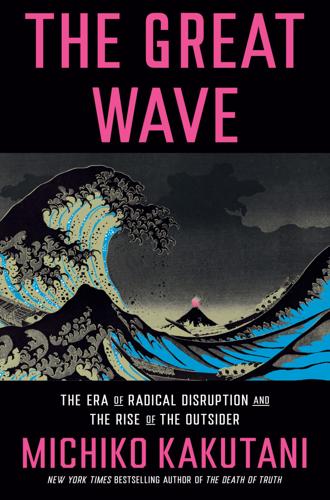
The Great Wave: The Era of Radical Disruption and the Rise of the Outsider
by
Michiko Kakutani
Published 20 Feb 2024
In 2014, Gavin Wood, a co-founder of the platform Ethereum, argued that “post-Snowden” it had become clear that it was dangerous to entrust our information to “large organizations and governments” that “routinely attempt to stretch and overstep their authority.” Bitcoin was released as an open-source program in early 2009 by the mysterious Satoshi Nakamoto (possibly a pseudonym for an individual or group), who said that in the wake of the 2008 crash, he wanted to create a secure currency that would be impervious to manipulation by bankers, politicians, and national monetary policies. Bitcoin and other cryptocurrencies gained popularity as bitterness over bank bailouts grew and investors welcomed the idea of skirting government and Wall Street control.
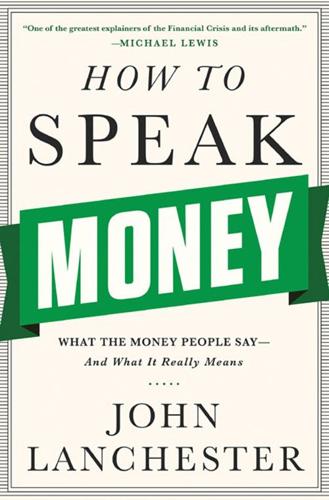
How to Speak Money: What the Money People Say--And What It Really Means
by
John Lanchester
Published 5 Oct 2014
Answer: Norway and Venezuela are the most expensive, and India and South Africa the least—though the Indian Big Mac is called the Maharaja Mac, and is made of chicken. If you’re wondering what Norway and Venuezuela have in common, the answer is nothing, except lots of oil. bitcoin An unregulated currency, created by someone or someones calling him, her, or themselves Satoshi Nakamoto, in 2008. It has no inherent value, so its worth depends entirely on the trust people have in it: in my view, that’s the most interesting thing about bitcoin, the fact it is a built-in lesson on the arbitrary nature of money values. Bitcoins are created by “mining,” i.e., by long slow computer calculations, and are stored and exchanged via digital “wallets.”
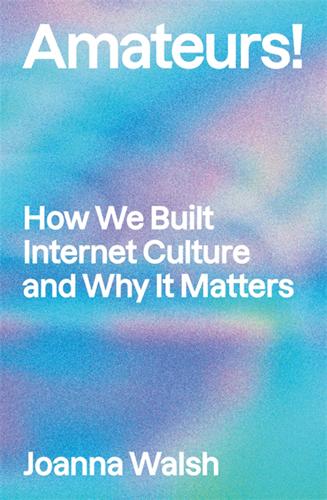
Amateurs!: How We Built Internet Culture and Why It Matters
by
Joanna Walsh
Published 22 Sep 2025
1970 Carol Hanisch, The Personal Is Political 1972 Deleuze and Guattari, Anti-Oedipus 2281974 Marina Abramović, Rhythm 0 1975 Martha Rosler, Semiotics of the Kitchen 1975 Stuart Hall, Resistance Through Rituals 1975 Chantal Akerman, Jeanne Dielman, 23 Quai du Commerce, 1080 Bruxelles 1976 Bill Gates, An Open Letter to Hobbyists 1979 Dick Hebdige, Subculture 1979 Pierre Bourdieu, Distinction: A Social Critique of the Judgement of Taste 1980 Julia Kristeva, Powers of Horror 1981 Julie Kristeva, Women’s Time 1983 Vaporware 1984 Jean-François Lyotard, “The Sublime and the Avant-Garde” 1991 Linus Torvalds, Linux 1993 Jean-Luc Nancy, The Sense of the World 1994 The Poetry Virgins, Sauce 1994 Rare, Killer Instinct 1996 Brewster Kahle, The Internet Archive (Archive.org) 1997 Dubravka Ugrešić, The Museum of Unconditional Surrender 1998 Nicholas Bourriaud, Relational Aesthetics 1999 Tracy Chevalier, The Girl with the Pearl Earring 1999 Pyra Labs, Blogger 1999 Giorgio Agamben, The Melancholy Angel 2000 Jacques Rancière, The Politics of Aesthetics 2000 Google AdWords 2000 Juliana Spahr, LIVE 2001 Internet Archive, The Wayback Machine (public access) 2001 William Basinski, The Disintegration Loops 2001 Percival Everett, Erasure 2002 Heath Bunting, Community Courier 2002 Julia Darling, Julia’s Diary 2002 Nicholas Bourriaud, Postproduction 2002 Brian Massumi, Parables for the Virtual 2003 Flarf 2003 Peter Webber, The Girl with the Pearl Earring 2292003 Greenspan, DeWolfe, Anderson, Berman, MySpace 2004 Mark Zuckerberg, Facebook 2004 Marisa Olson, American Idol Training Blog 2004 McKenzie Wark, A Hacker Manifesto 2005 Tim O’Reilly, What Is Web 2.0 2005 Sianne Ngai, Ugly Feelings 2005 4Chan, Caturday 2005 Chen, Hurley, Karim, YouTube 2005 Chris Neukirchen, Anarchia 2006 Marisa Olson et al., Nasty Nets Internet Surfing Club (2006–2012) 2006 Dorsey, Glass, Stone, Williams, Twitter 2007 David Karp, Tumblr 2007 Nakagawa, Unebasami, Icanhascheezburger 2007 Cheese, Rountree, Wilkinson, Baron, Know Your Meme 2008 Bernard Steigler, Amateur 2008 Gwyneth Paltrow, Goop 2008 Satoshi Nakamoto, bitcoin.org 2009 Ed Halter, ‘After the Amateur’ 2009 Hito Steyerl, In Defense of the Poor Image 2010 Systrom, Krieger, Instagram 2011 Macintosh Plus, Floral Shoppe 2011 Jacques Rancière, Aisthesis 2011 James Bridle, The New Aesthetic 2011 Lauren Berlant, Cruel Optimism 2011 Marisa Olson, What Is Postinternet?
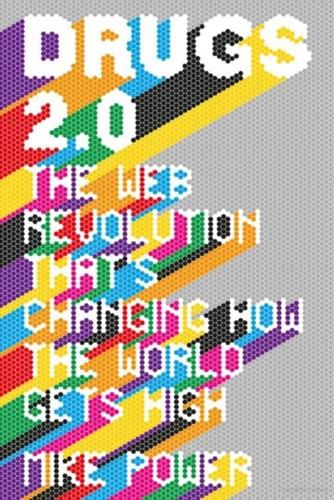
Drugs 2.0: The Web Revolution That's Changing How the World Gets High
by
Mike Power
Published 1 May 2013
Originally, bitcoins were produced by ‘miners’ – a figurative term for computer owners who donated their processor time to the project and were rewarded with coins for their efforts. The currency, or rather, the system that creates the currency, was released to the web on 1 November 2008, as the world economic system teetered on the brink of systemic collapse. Anonymous software coder Satoshi Nakamoto issued the open source application, and included a sly reference to the latest banking bailout by Britain’s then-chancellor of the exchequer, Alistair Darling, buried in code for the so-called Genesis Block – the first coins ever ‘mined’, in January 2009.4 The main reason no purely digital currency has ever gained traction is because data-as-cash has a central flaw.

What Algorithms Want: Imagination in the Age of Computing
by
Ed Finn
Published 10 Mar 2017
The very success of this arbitrage sea change has accentuated the objections of those who see the digital transactions we all participate in not as matters of convenience—free services provided in exchange for viewing a few targeted ads, for example—but as the radical evisceration of individual privacy and autonomy for the sake of new collective, algorithmically engineered systems of value. Perhaps the single greatest example of this ideological reaction is the rapid popularization of a new cryptocurrency called Bitcoin. Bitcoin first emerged as a paper published in November 2008 by the apparently fictional mathematician Satoshi Nakamoto (about ten years after Schwartz predicted e-cash would become mainstream). In the paper Nakamoto argued for a new financial model that would eliminate the key vulnerability of traditional financial systems: “an electronic payment system based on cryptographic proof instead of trust, allowing any two willing parties to transact directly with each other without the need for a trusted third party.”24 The straightforward paper describes a system for exchanging currency based purely on computing power and mathematics (which I describe in more detail below), with no dependence on a central bank, a formal issuing authority, or other “faith and credit” standards of traditional currencies.
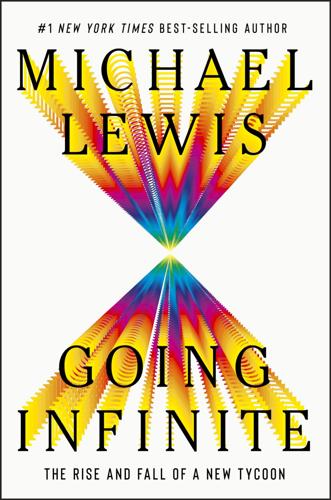
Going Infinite: The Rise and Fall of a New Tycoon
by
Michael Lewis
Published 2 Oct 2023
PUTinCoin said it was supporting the Russian economy and “was created to pay tribute to the Russian people and their president.” Hot Potato was the best and, in a way, the most honest. A pure gambling mechanism, it self-destructed in thirty days. * Technically it was called XRP, but everyone called it Ripple. 6 Artificial Love In late October 2008, someone calling himself Satoshi Nakamoto—and who to this day, incredibly, has kept his identity a secret—published a paper that introduced the idea of Bitcoin. It was mostly a technical description of what would become the world’s first cryptocurrency. A bitcoin was an “electronic coin”; it existed on a public ledger called a “proof-of-work chain”; each time it was transferred from one person to another, its authenticity was verified by programmers, who added the transaction to the public ledger; those programmers, who would eventually become known as bitcoin “miners,” were paid for their work by being given new bitcoin; and so on.* (Interestingly, the word “blockchain” is nowhere in the paper.)

The Rationalist's Guide to the Galaxy: Superintelligent AI and the Geeks Who Are Trying to Save Humanity's Future
by
Tom Chivers
Published 12 Jun 2019
I ended up having a lengthy conversation about this with a good friend who works in IT, and he was saying essentially that. How will an AI turn all the matter in the universe into paperclips if it can’t pick anything up? But ordinary, non-superintelligent humans can and do have enormous power without making much use of their physical abilities. ‘Satoshi Nakamoto [the mysterious, pseudonymous Bitcoin creator] already made a billion dollars online without anybody knowing his true identity just by being good at math and having a bit of foresight,’ writes Scott Alexander. ‘He’s probably not an AI, but he could have been.’1 Once you’ve got a billion dollars, you have quite a lot of power.

MegaThreats: Ten Dangerous Trends That Imperil Our Future, and How to Survive Them
by
Nouriel Roubini
Published 17 Oct 2022
Blockchain technology, a database system shared across a large number of servers, makes it possible to define the ownership of any single element of the data (for example, a unit of a digital currency) without a single institution to validate that ownership, by using cryptographic techniques. This technology has caused a burst of so-called cryptocurrencies with no allegiance to any government or central bank. A system designed for transparency has an ironically cloudy genesis—in a 2008 paper attributed to Satoshi Nakamoto, a man who may or may not exist (or who may represent a collective of people). The paper’s author or authors proposed Bitcoin as a peer-to-peer “electronic payment system based on cryptographic proof instead of trust.” Chains of digital signatures create electronic coins and validate transactions with them.

Augmented: Life in the Smart Lane
by
Brett King
Published 5 May 2016
Buncombe, “Pakistani court declares US drone strikes in the country’s tribal belt illegal,” Independent, 9 May 2013. 12 http://www.nest.com Chapter 9 Smart Banking, Payments and Money “The root problem with conventional currency is all the trust that’s required to make it work. The central bank must be trusted not to debase the currency, but the history of fiat currencies is full of breaches of that trust.” Satoshi Nakamoto, pseudonym of the anonymous creator of Bitcoin The evolution of banking and payments has often been correlated with technological advancement. Today, the primary method of transferring money between banks globally is a transaction called a wire transfer or telegraphic transfer, so named because the instructions for these transfers were sent via telegraph or “wire” initially, then later by Telex and now via interbank electronic networks like SWIFT.1 The first mainframe computer ever built was for a bank, too.
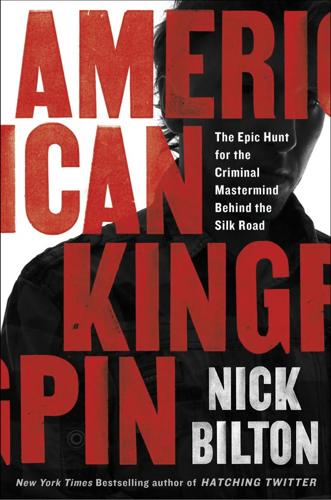
American Kingpin: The Epic Hunt for the Criminal Mastermind Behind the Silk Road
by
Nick Bilton
Published 15 Mar 2017
Before arriving, Gary had done his homework, scouring news articles, forum posts by the Dread Pirate Roberts, and research about the Dark Web, all to get acquainted with the case he was about to join. While reading these pieces, Gary had come across the first white paper that had been published about Bitcoin, written by the creator of the digital currency, an anonymous man who went by the pseudonym Satoshi Nakamoto. Gary read the paper once and nothing stood out. He read it a second time, and still nothing. But the third time he noticed something, in a section of the paper that referenced the “Gambler’s Ruin problem,” a theory that no matter how much money you have in a betting scenario, the casino (or house) has an infinite amount of money, and therefore, if you keep making bets, the house will eventually win.
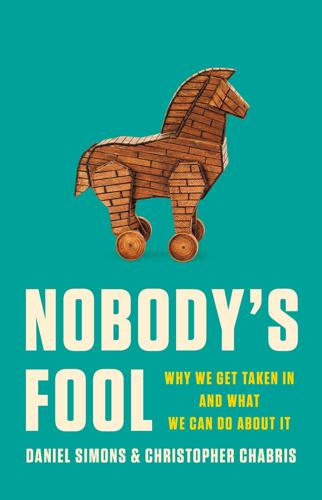
Nobody's Fool: Why We Get Taken in and What We Can Do About It
by
Daniel Simons
and
Christopher Chabris
Published 10 Jul 2023
A month later, he disappeared.1 Kumbhani was the founder of BitConnect, an organization that offered a way for people to participate in the market for cryptocurrencies, or “crypto”—digital assets whose values are not tied to any particular government’s policies or actions. Bitcoin, the original and most famous cryptocurrency, was invented in 2008 by one or more people using the pseudonym “Satoshi Nakamoto.” Bitcoin has a finite supply, and its value is connected to that scarcity. In that way, it is less like a regular currency than like gold or oil; you can “mine” more Bitcoin, metaphorically, by spending computational resources (literally, computer processing time and the energy required to power it) to solve complicated mathematical problems.
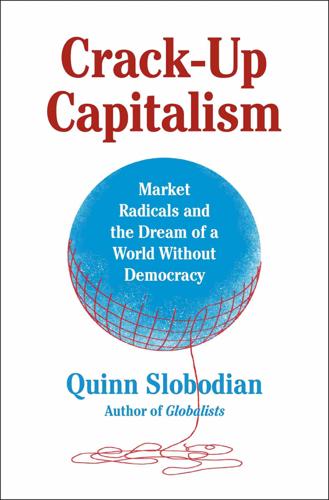
Crack-Up Capitalism: Market Radicals and the Dream of a World Without Democracy
by
Quinn Slobodian
Published 4 Apr 2023
The idea of competing private currencies had been widely discussed in libertarian circles since Friedrich Hayek wrote about the “denationalization of money” in 1976.44 They had never caught on, partly because of the difficulty of finding the right technical means. Bitcoin, designed by a mysterious figure named Satoshi Nakamoto, was an ingenious system in which digital “coins” could be securely transferred between participants, with all transactions and holdings recorded on a public ledger called the blockchain. The coins could be “mined”—that is, acquired—by running computer programs solving difficult equations, and the system limited the total number of bitcoins that could ever be mined to twenty-one million.

Platform Revolution: How Networked Markets Are Transforming the Economy--And How to Make Them Work for You
by
Sangeet Paul Choudary
,
Marshall W. van Alstyne
and
Geoffrey G. Parker
Published 27 Mar 2016
To solve this problem, competing exchanges, such as the alternative trading system IEX, are using their own supercomputers to precisely time the order of bids, thereby eliminating the advantages of a Goldman Sachs.36 Architecture can level the playing field, making markets more competitive and fair for all. One of the most innovative forms of architectural control ever invented made its appearance in 2008, when an anonymous coding genius known as Satoshi Nakamoto published a paper on the Cryptography mailing list defining the Bitcoin digital currency and the so-called blockchain protocol governing it. Although Bitcoin is notable as the world’s first unforgeable digital currency that cannot be controlled by a government, bank, or individual, the blockchain is truly revolutionary.

Radicals Chasing Utopia: Inside the Rogue Movements Trying to Change the World
by
Jamie Bartlett
Published 12 Jun 2017
There is, at the time of writing, a major divide in the bitcoin community between those who want to make the system more efficient by executing more transactions per block, which requires a major redesign, and those who reject the idea as being too centralised. The blocks of transactions would need to get very large indeed, otherwise they will start queuing up. Because the designer and creator of bitcoin, Satoshi Nakamoto, decided to cap the size of a block at one megabyte, or about 1,400 transactions, it can handle only around seven transactions per second, compared to the 1,736 a second Visa handles in America. Blocks could be made bigger, but bigger blocks would take longer to propagate through the network, worsening the risks of forking.
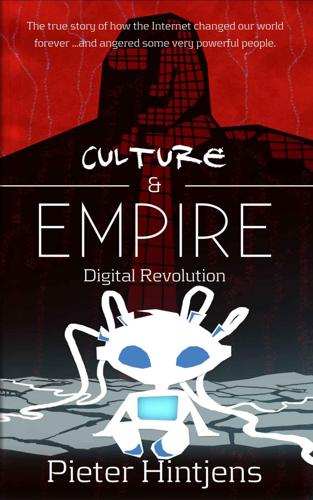
Culture & Empire: Digital Revolution
by
Pieter Hintjens
Published 11 Mar 2013
In the beginning, when transaction chains were short, they were easy to process, and people could mine thousands of coins on their PCs. Today, as chains are long, it takes more effort to mine coins. Every year, the number of coins that can be mined falls, so at some point there will be no new BitCoins. The BitCoin design and open source software was written by a prudently anonymous team calling themselves "Satoshi Nakamoto." They took some existing concepts from the cryptographic community, and invented some new ones. The technology had one major vulnerability, which was fixed in 2010. Since then, it appears robust. BitCoin satisfies most of the criteria for use as a medium of digital trade. It is free from coercion by authorities.

The Blockchain Alternative: Rethinking Macroeconomic Policy and Economic Theory
by
Kariappa Bheemaiah
Published 26 Feb 2017
Now that you have selected a technology, dissect it completely and trace back the origin of every piece of technology that it embeds. You will find that in every case, the technology you are analyzing could not have existed had it not been for a government grant. This is true even of the Blockchain. While the Blockchain was first created by a single person/group (Satoshi Nakamoto), what it represents is decades’ worth of research and development in cryptography, encryption, economics, and game theory—all subjects that have been funded massively by governments. Had it not been for the ARPANet, Vint Cerf and Bob Khan would have never received the necessary funding to develop packet-switching data and you would not be reading this book had that happened.
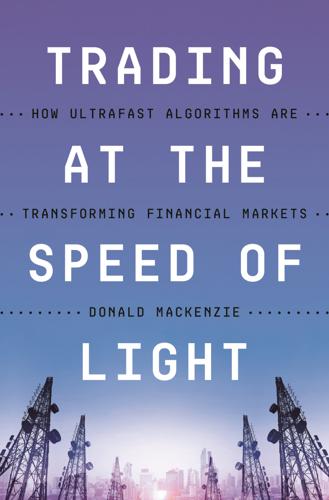
Trading at the Speed of Light: How Ultrafast Algorithms Are Transforming Financial Markets
by
Donald MacKenzie
Published 24 May 2021
The issue that most clearly makes material political economy applicable is how to motivate at least a subset of the users of a cryptocurrency to check the validity of each transaction (including checking the validity of each other’s checking) and take part in adding it irreversibly to the blockchain, the record of every transaction that has taken place. The solution adopted for bitcoin by Satoshi Nakamoto, its pseudonymous inventor, is known as proof-of-work. Roughly every ten minutes, all day, every day, bitcoin miners, as they are called (and I like the moniker’s materiality) compete to be the first to find a hash of a block of transactions that is smaller than a certain target binary number (a hash is a cryptographic transformation by a predetermined algorithm).

The Optimist: Sam Altman, OpenAI, and the Race to Invent the Future
by
Keach Hagey
Published 19 May 2025
The Wired article opens at one such Extropian gathering during which an attendee shows up dressed like “State,” wearing a vinyl bustier, miniskirt, and chain harness top and carrying a riding crop, dragging another attendee dressed up as “the Taxpayer” on a leash on all fours.16 The mailing list and broader Extropian community had only a few hundred members, but among them were a number of famous names, including Hanson; Marvin Minsky, the Turing Award–winning scientist who founded MIT’s AI lab in the 1970s; Ray Kurzweil, the computer scientist and futurist whose books would turn “the singularity” into a household word; Nick Bostrom, the Swedish philosopher whose writing would do the same for the supposed “existential risk” posed by AI; Julian Assange, a decade before he founded WikiLeaks; and three people—Nick Szabo, Wei Dai, and Hal Finney—rumored to either be or be adjacent to the pseudonymous creator of Bitcoin, Satoshi Nakamoto. “It is clear from even a casual perusal of the Extropians archive (maintained by Wei Dai) that within a few months, teenage Eliezer Yudkowsky became one of this extraordinary cacophony’s preeminent voices,” wrote the journalist Jon Evans in his history of the movement. In 1996, at age seventeen, Yudkowsky argued that superintelligences would be a great improvement over humans, and could be here by 2020.17 Two members of the Extropian community, internet entrepreneurs Brian and Sabine Atkins—who met on an Extropian mailing list in 1998 and were married soon after—were so taken by this message that in 2000 they bankrolled a think tank for Yudkowsky, the Singularity Institute for Artificial Intelligence.18 At twenty-one, Yudkowsky moved to Atlanta, and began drawing a nonprofit salary of around $20,000 a year to preach his message of benevolent superintelligence.
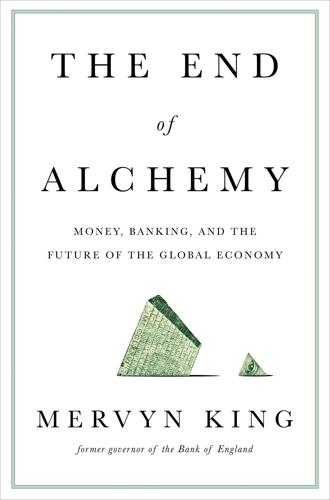
The End of Alchemy: Money, Banking and the Future of the Global Economy
by
Mervyn King
Published 3 Mar 2016
In principle, two parties engaged in a transaction could instead settle directly by a transfer of money from one electronic account to another in ‘real time’. A step in that direction was the creation of bitcoin – a ‘virtual’ currency launched in 2009, allegedly by one or more individuals under the pseudonym of Satoshi Nakamoto. Ownership of bitcoins is transferred through bilateral transactions without the need for verification by a third party (necessary in all other current electronic payment systems). Transactions are verified by the use of a software accounting system accessible to all users.35 The supply of bitcoins is governed by an algorithm embodied in the software that runs the system (with a maximum number of twenty-one million).

Surveillance Valley: The Rise of the Military-Digital Complex
by
Yasha Levine
Published 6 Feb 2018
It’s Amazon—if Amazon sold mind-altering chemicals.”54 Built and operated by a mysterious figure who went by the name of Dread Pirate Roberts, Silk Road had two components that allowed it to operate in total anonymity. One, all purchases were processed using a new digital crypto-currency called Bitcoin, which was created by the mysterious pseudonymous cryptographer Satoshi Nakamoto. Two, to use Silk Road, both buyers and sellers first had to download a program called Tor and use a specialized browser to access a specialized store URL—http://silkroad6ownowfk.onion—that took them off the Internet and into the Tor cloud, a.k.a. the dark web. Tor was a cutting-edge anonymity tool made by Tor Project, a nonprofit set up in 2004 by a plump and ponytailed cryptographer named Roger Dingledine, who at the time ran it out of a cluttered office above a YMCA in Cambridge, Massachusetts.
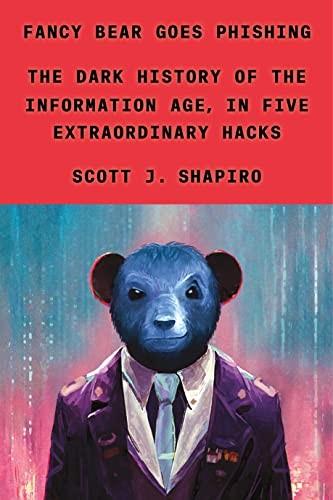
Fancy Bear Goes Phishing: The Dark History of the Information Age, in Five Extraordinary Hacks
by
Scott J. Shapiro
especially severe: Anthony Faiola, “Mass Flight of Tech Workers Turns Russian IT into Another Casualty of War,” The Washington Post, May 1, 2022. “Fucking Visa”: Brian Krebs, Spam Nation (Naperville, IL: Sourcebooks, 2014), 251. Bitcoin: For the original white paper, see the (pseudonymous) Satoshi Nakamoto, “Bitcoin: A Peer-to-Peer Electronic Cash System,” https://bitcoin.org/bitcoin.pdf. “over-the-counter brokers: Connor Dempsey, “How Does Crypto OTC Actually Work?,” Circle Research, Medium, March 25, 2019, https://medium.com/circle-research/how-does-crypto-otc-actually-work-e2215c4bb13. “surveillance capitalism”: Shoshana Zuboff, The Age of Surveillance Capitalism: The Fight for a Human Future at the New Frontier of Power (New York: PublicAffairs, 2019).

The Quiet Coup: Neoliberalism and the Looting of America
by
Mehrsa Baradaran
Published 7 May 2024
THE CRYPTOCURRENCY INDUSTRY began as a backlash to neoliberal hypocrisy even as it doubled down on neoliberal myths about money and society. Bitcoin sought to create the monetary system of Hayek’s and Friedman’s dreams—rooted in scarcity and free of state control. The explosion of cryptocurrencies and the so-called blockchain revolution began with the launch of bitcoin, which began as a reaction to the bank bailouts. In 2009, Satoshi Nakamoto—a pseudonym for the actual creator—laid out the code and logic of bitcoin. Bitcoin was a new form of currency, “mined” by computer algorithm through end-to-end encryption that would be a fixed unit of exchange existing on the blockchain. Embedded in the genesis block of code upon which all bitcoin could be “mined” was a single line of text: “The Times 03/Jan/2009 Chancellor on brink of second bailout for banks.”
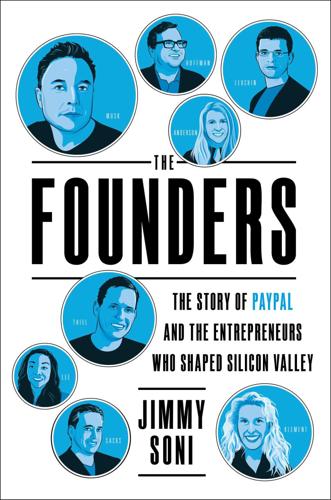
The Founders: The Story of Paypal and the Entrepreneurs Who Shaped Silicon Valley
by
Jimmy Soni
Published 22 Feb 2022
In February 1999, Levchin attended the International Financial Cryptography Association conference. Hosted in Anguilla, a sliver of a Caribbean island, the annual gathering drew the leading players in academic cryptography and digital currencies. (To this day, Thiel, who attended the 2000 conference, harbors a theory that Satoshi Nakamoto—the mysterious founder of the cryptocurrency Bitcoin—was among the attendees.) At the conference, Levchin wanted to test the waters for his idea of a cashless, all-digital, PalmPilot-based money system. The academics were unimpressed—they had been thinking about this problem for a long time.
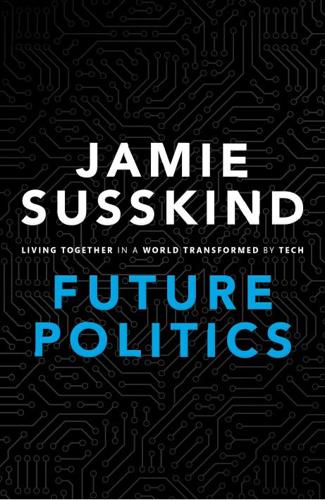
Future Politics: Living Together in a World Transformed by Tech
by
Jamie Susskind
Published 3 Sep 2018
Rather, it’s that this scale of cooperative behaviour would have been impossible in the past. Connective technology has made it possible.23 The last few years have seen the emergence of another technology with potentially far-reaching implications for connectivity and cooperation. This is ‘blockchain’, invented by the mysterious pioneer (or pioneers) Satoshi Nakamoto. It’s best known as the OUP CORRECTED PROOF – FINAL, 28/05/18, SPi РЕЛИЗ ПОДГОТОВИЛА ГРУППА "What's News" VK.COM/WSNWS 46 FUTURE POLITICS system underpinning the cryptocurrency Bitcoin, launched in 2009. The workings of blockchain are technically complex, but the basic premise can be described simply.

Future Crimes: Everything Is Connected, Everyone Is Vulnerable and What We Can Do About It
by
Marc Goodman
Published 24 Feb 2015
DAN KAMINSKY, SECURITY RESEARCHER Technology is enabling new forms of money, and the growing digital economy holds great promise to provide new financial tools, especially to the world’s poor and unbanked. These emerging virtual currencies are often anonymous and none have received quite as much press as Bitcoin, a decentralized peer-to-peer digital form of money. Bitcoins were invented in 2009 by a mysterious person (or group of people) using the alias Satoshi Nakamoto, and the coins are created or “mined” by solving increasingly difficult mathematical equations, requiring extensive computing power. The system is designed to ensure no more than twenty-one million Bitcoins are ever generated, thereby preventing a central authority from flooding the market with new Bitcoins.
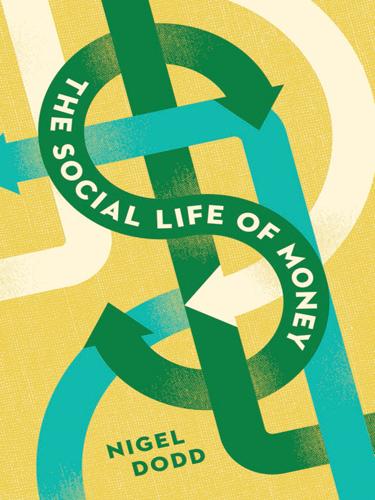
The Social Life of Money
by
Nigel Dodd
Published 14 May 2014
Two key dangers have to be avoided: the low-cost producer who can flood the market with bit gold (or, subsequently, Bitcoins) and the profiteering “bit gold miner” who uses optimized computer architecture. The history of Bitcoin suggests that the latter has proven more difficult to avoid than the former. Satoshi Nakamoto—a pseudonym for an individual or a group—introduced the idea of Bitcoin in a 2008 paper (Nakamoto 2008). He characterized the scheme as a system for electronic transactions that did not rely on trust, a possibility that in his view specifically required the elimination of opportunities for double spending.

Engineering Security
by
Peter Gutmann
“I-Opener FAQ”, http://fastolfe.net/2006/iopener/faq. “I-Opener Running Linux”, http://www.linux-hacker.net/imod/imod.html. References [81] [82] [83] [84] [85] 411 “M4I (Midori Linux for iOpener) Homepage”, http://tengu.homeip.net/midori. “Bitcoin: A Peer-to-Peer Electronic Cash System”, ‘Satoshi Nakamoto’, 2008, http://bitcoin.org/bitcoin.pdf. “Bitter to Better — How to Make Bitcoin a Better Currency”, Simon Barber, Xavier Boyen, Elaine Shi and Ersin Uzun, Proceedings of the 15th Financial Cryptography Conference (FC’12), Springer-Verlag LNCS No.7397, February 2012, p.399. “Custom Chips Could Be the Shovels in a Bitcoin Gold Rush”, Tom Simonite, 5 December 2012, http://www.technologyreview.com/news/508061/custom-chips-could-be-the-shovels-in-a-bitcoin-gold-rush.